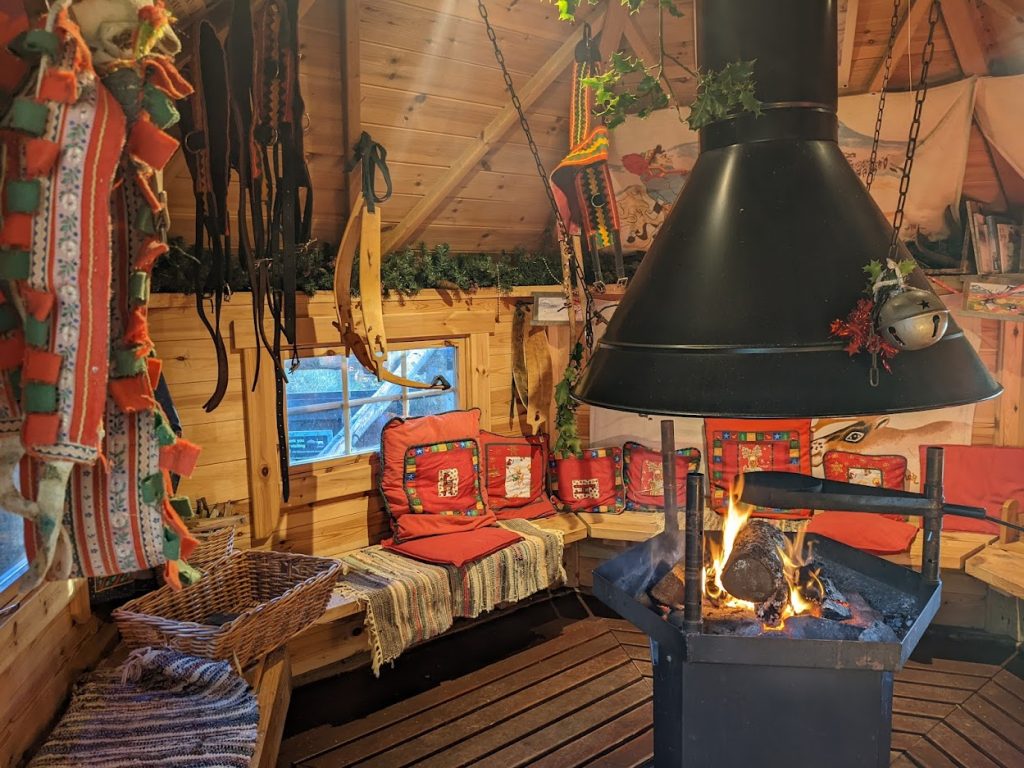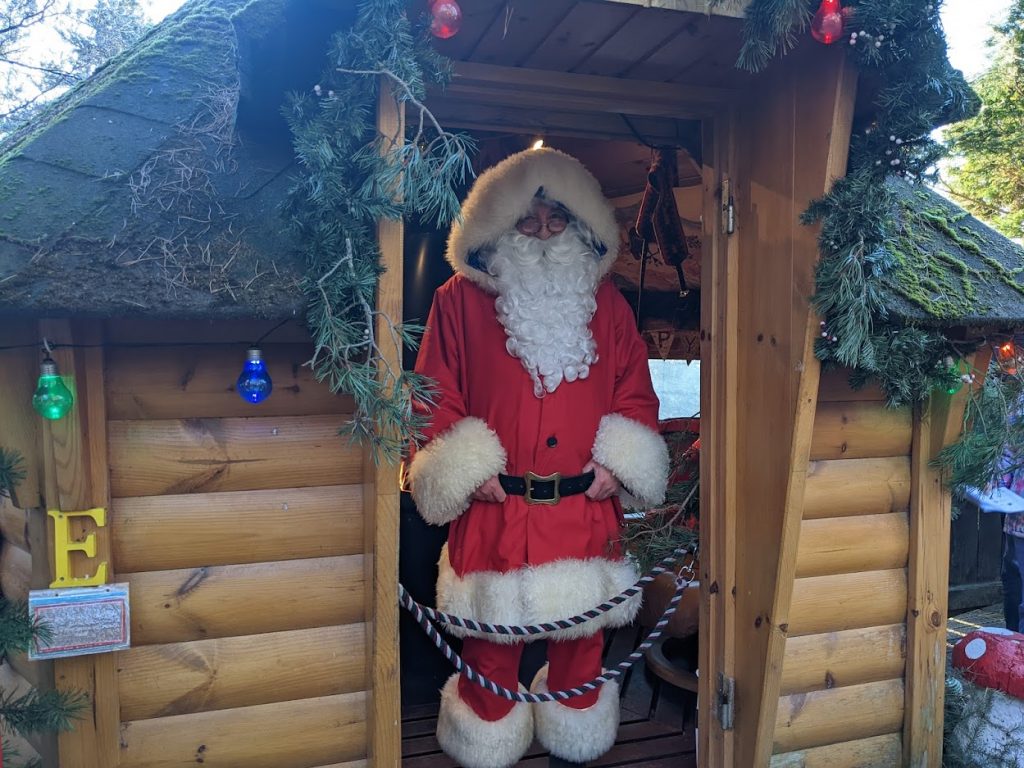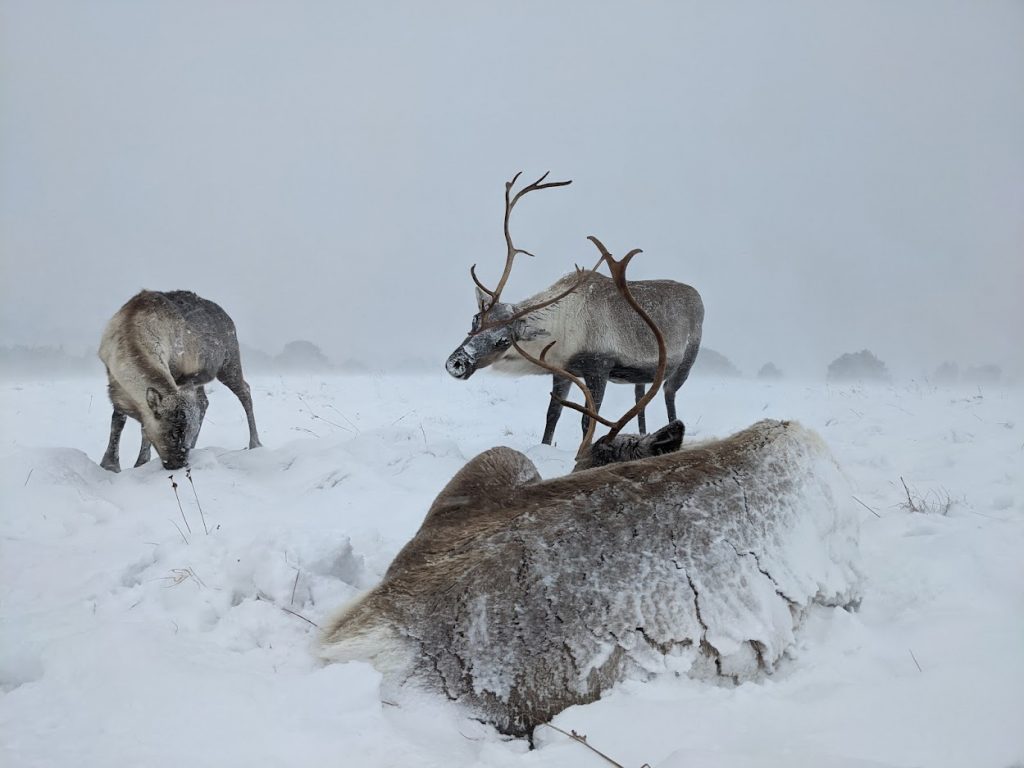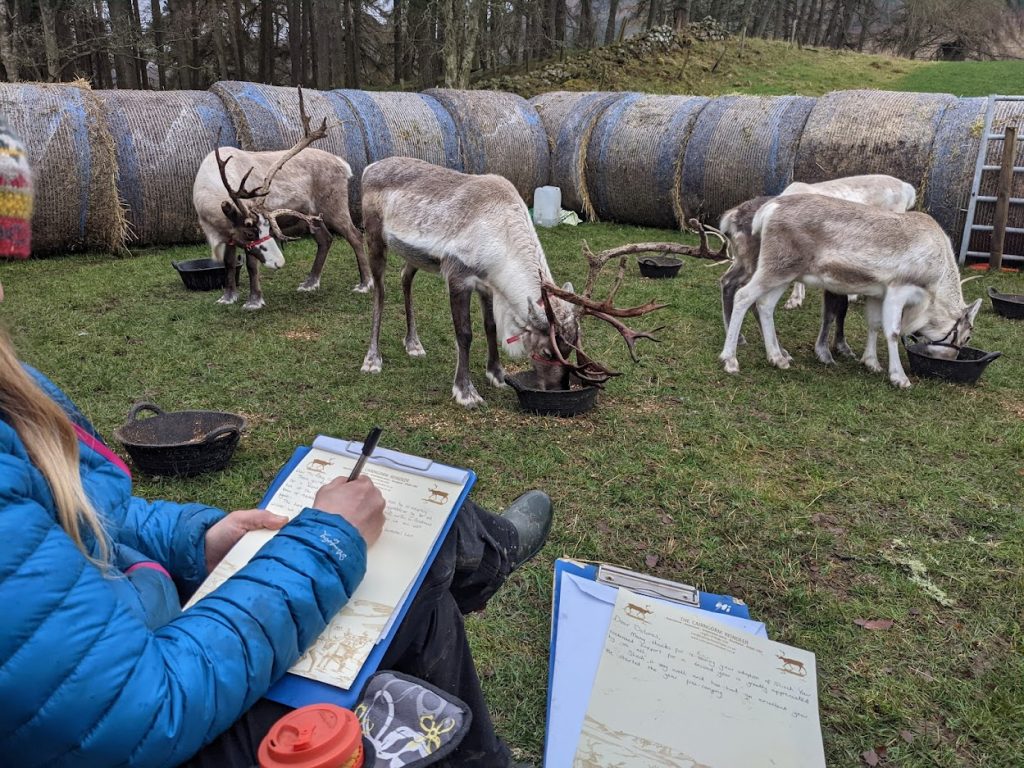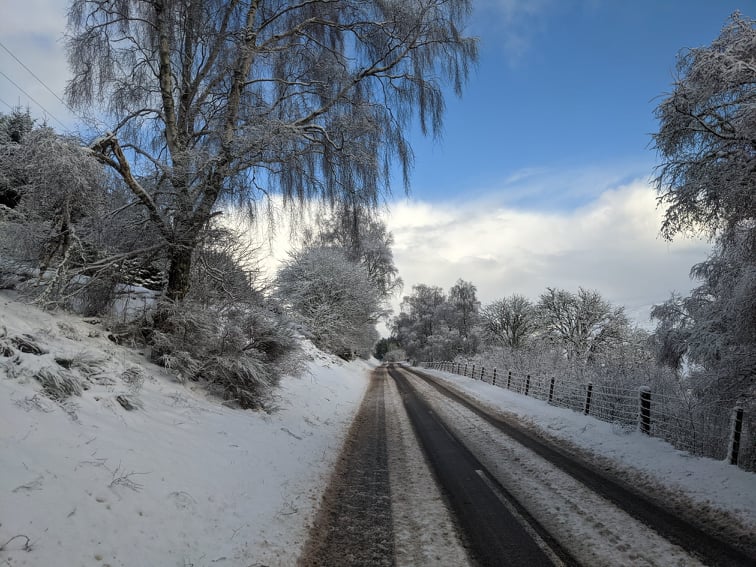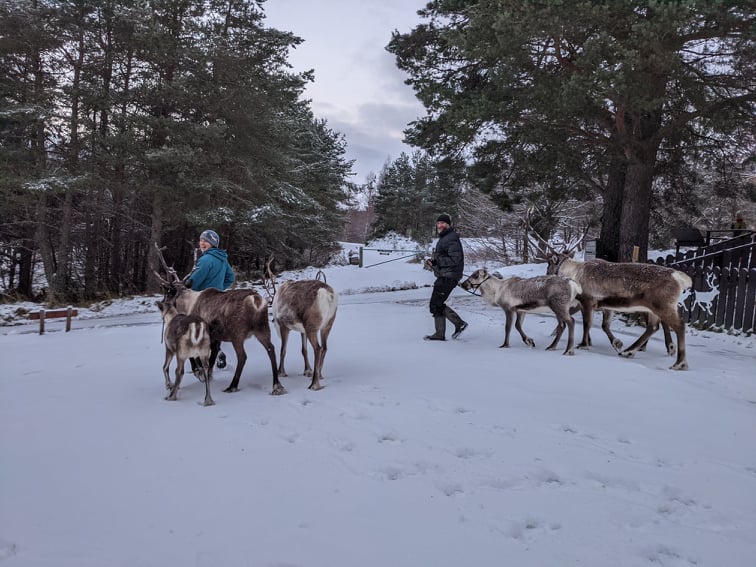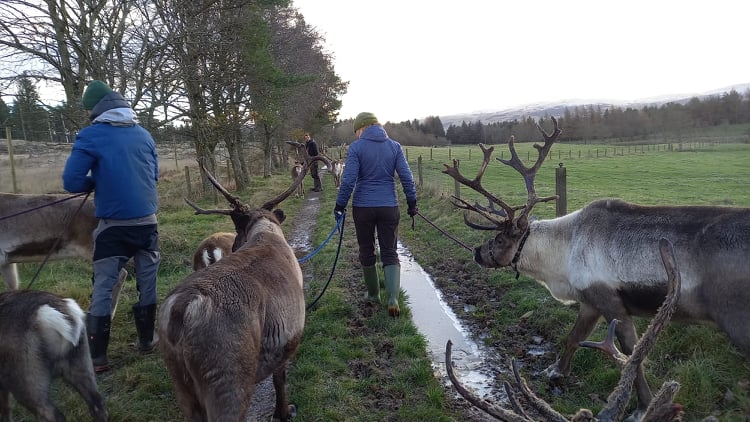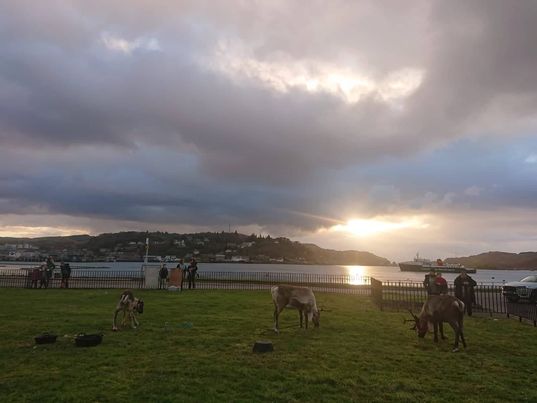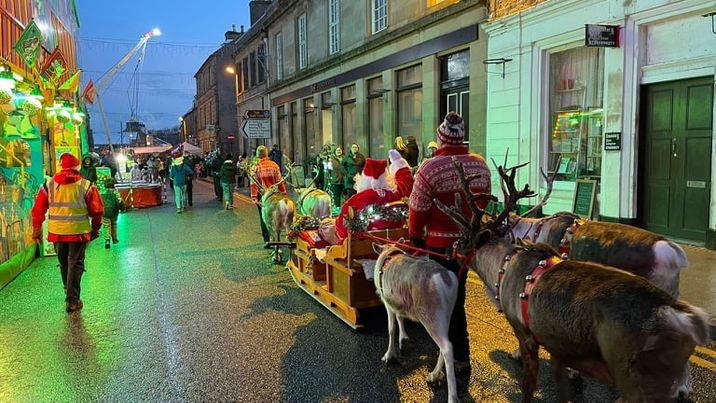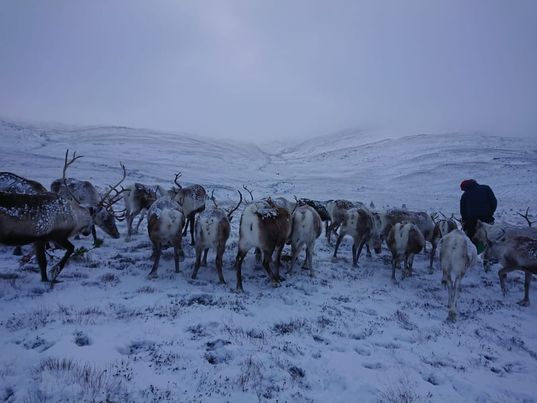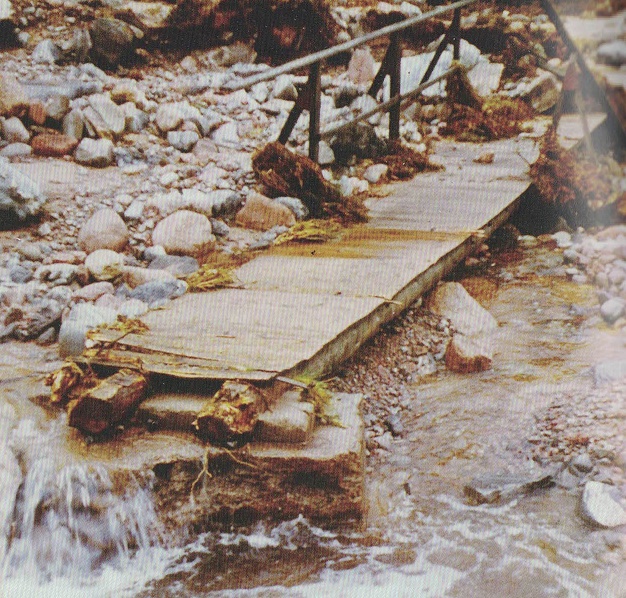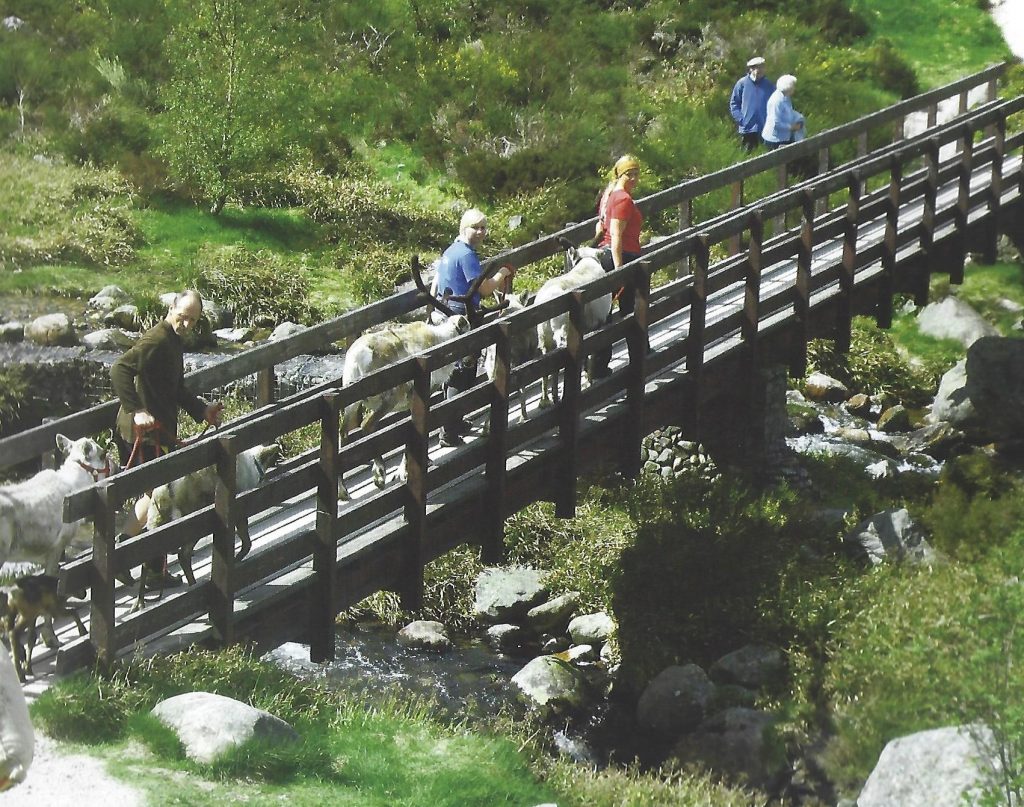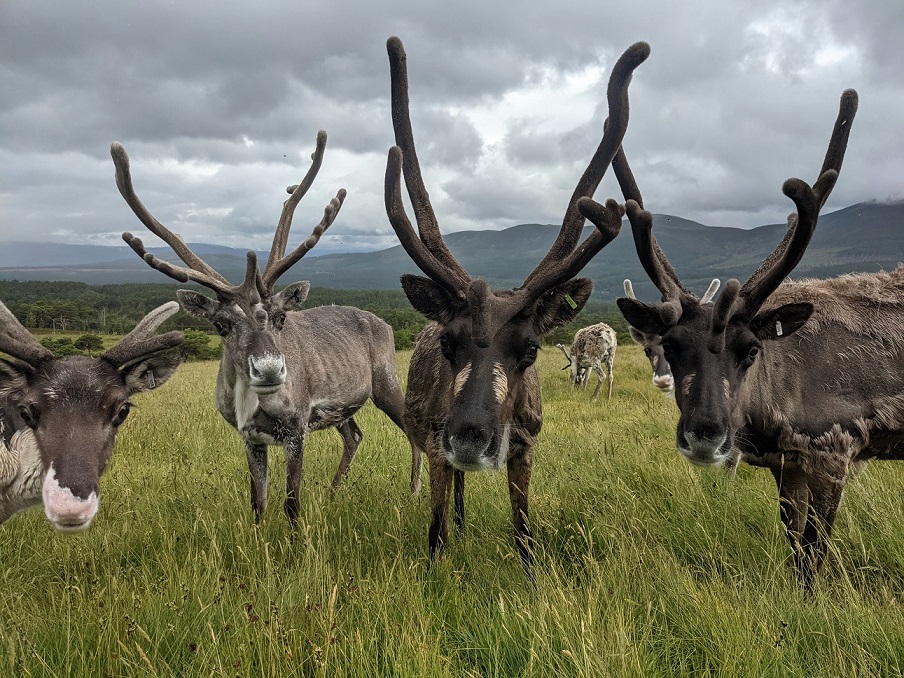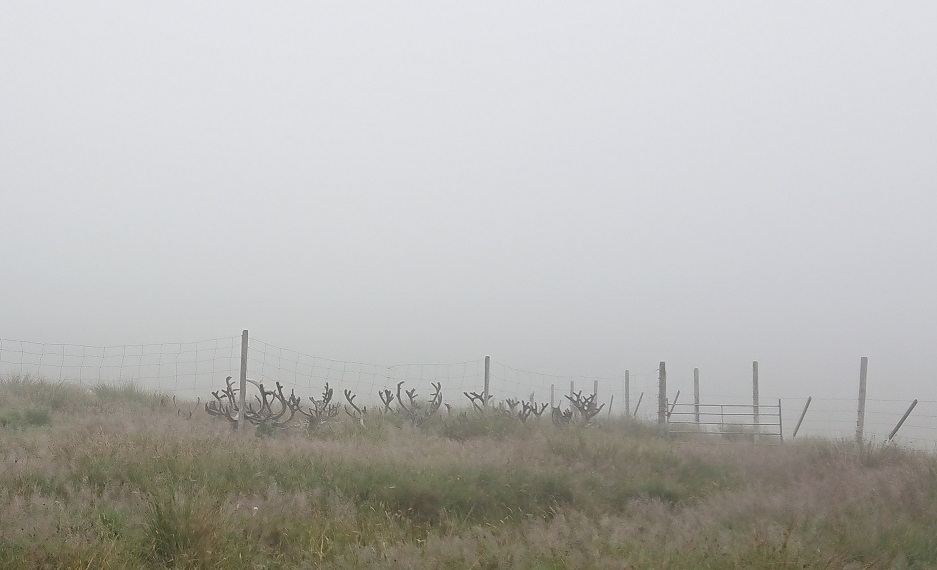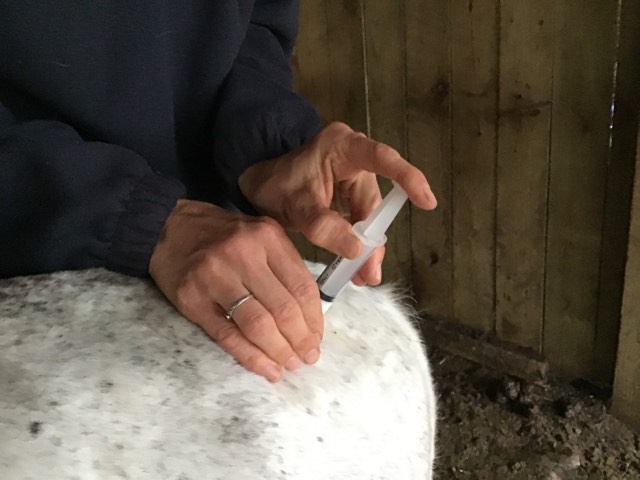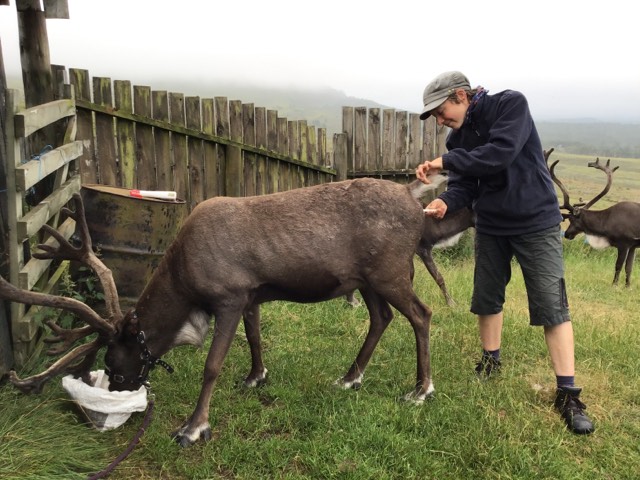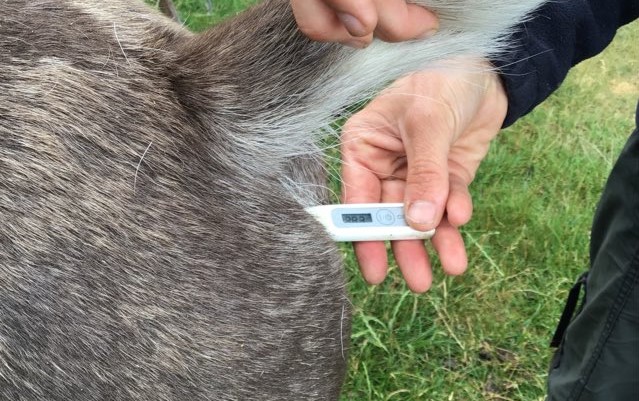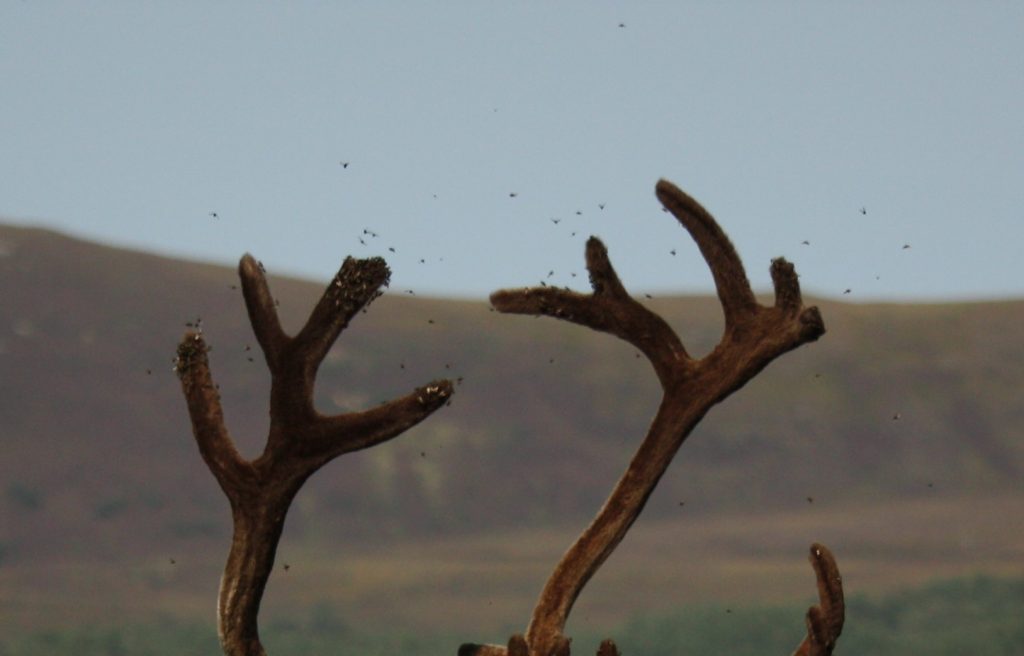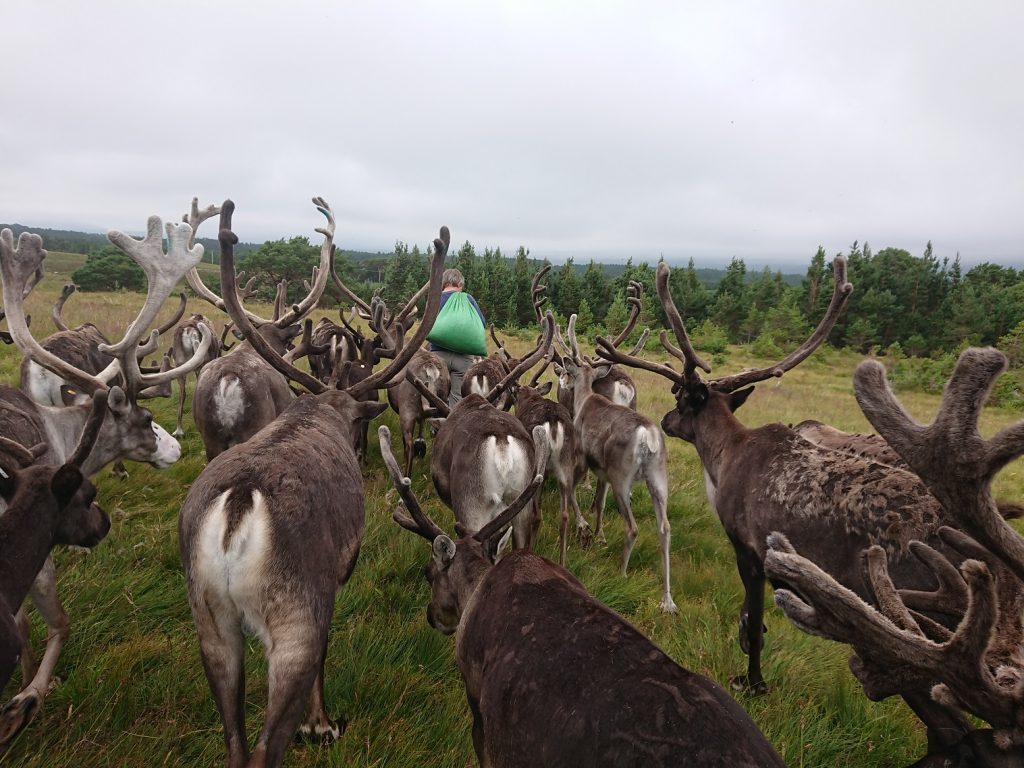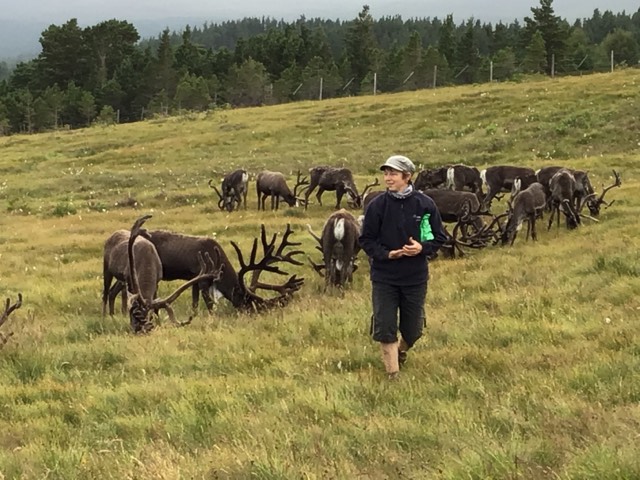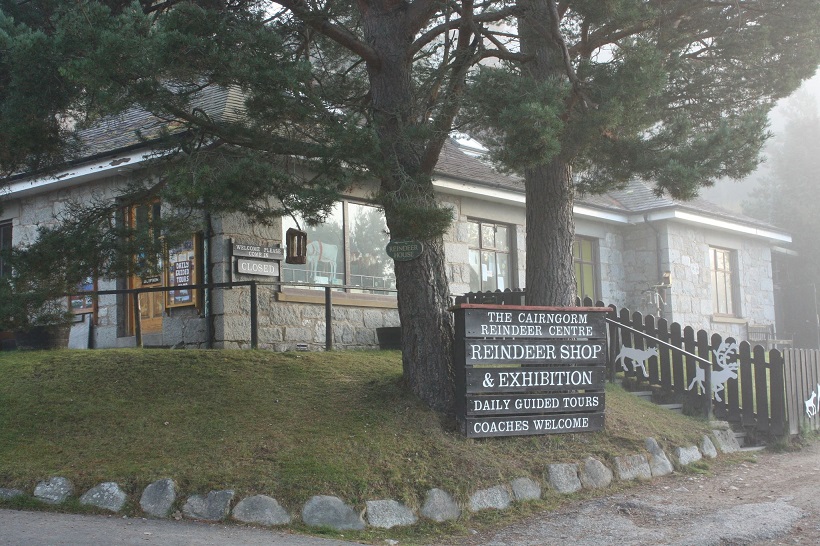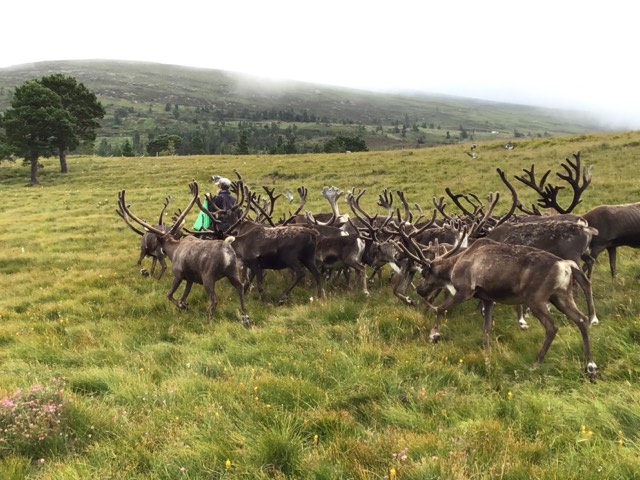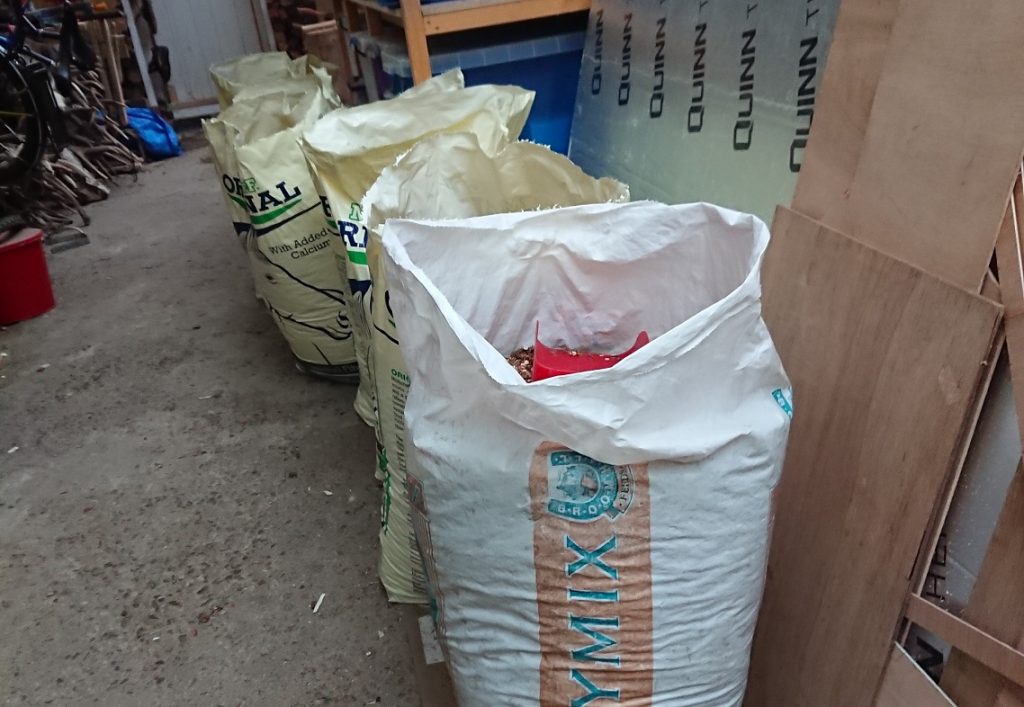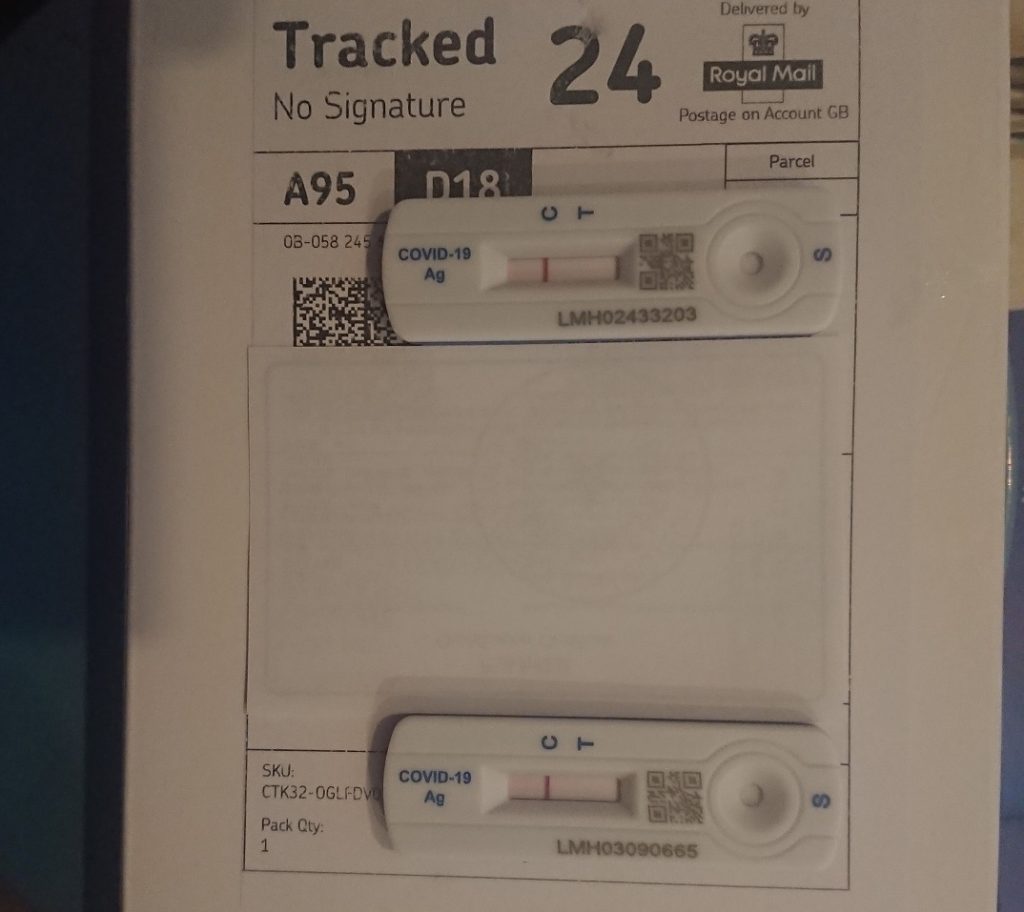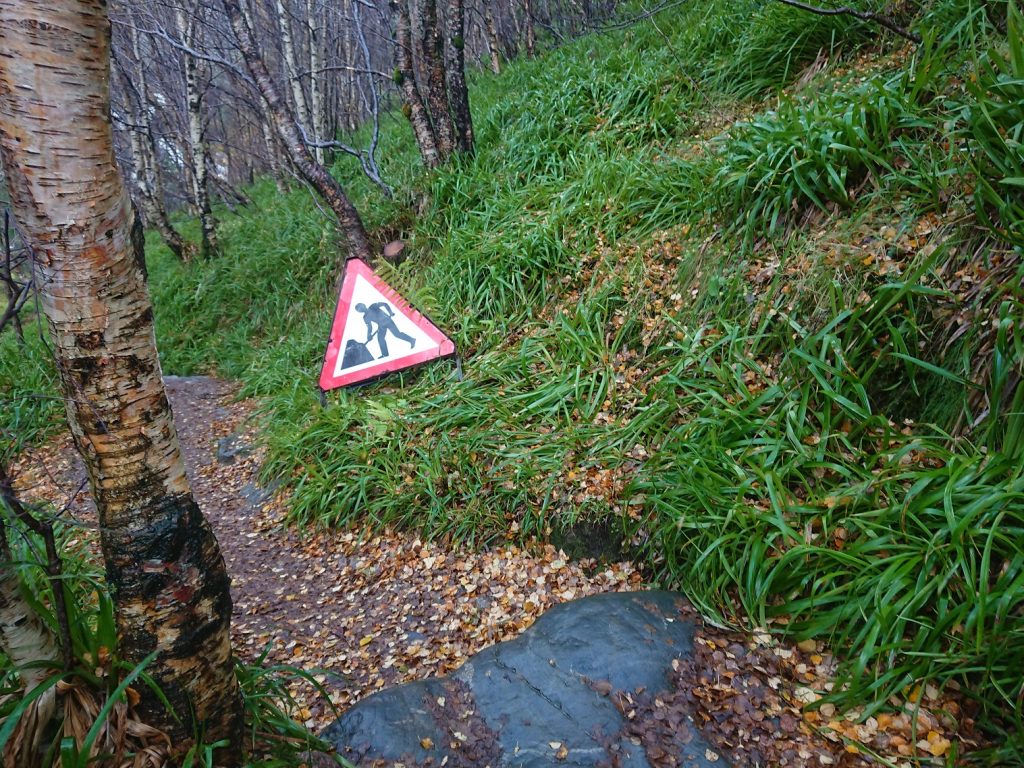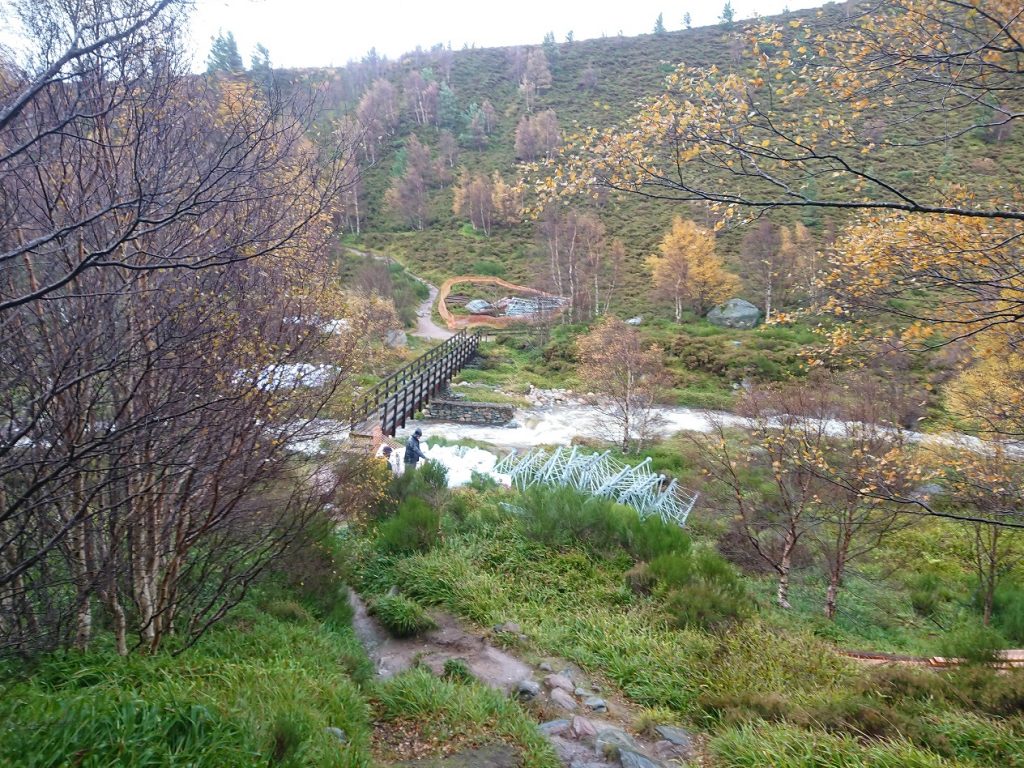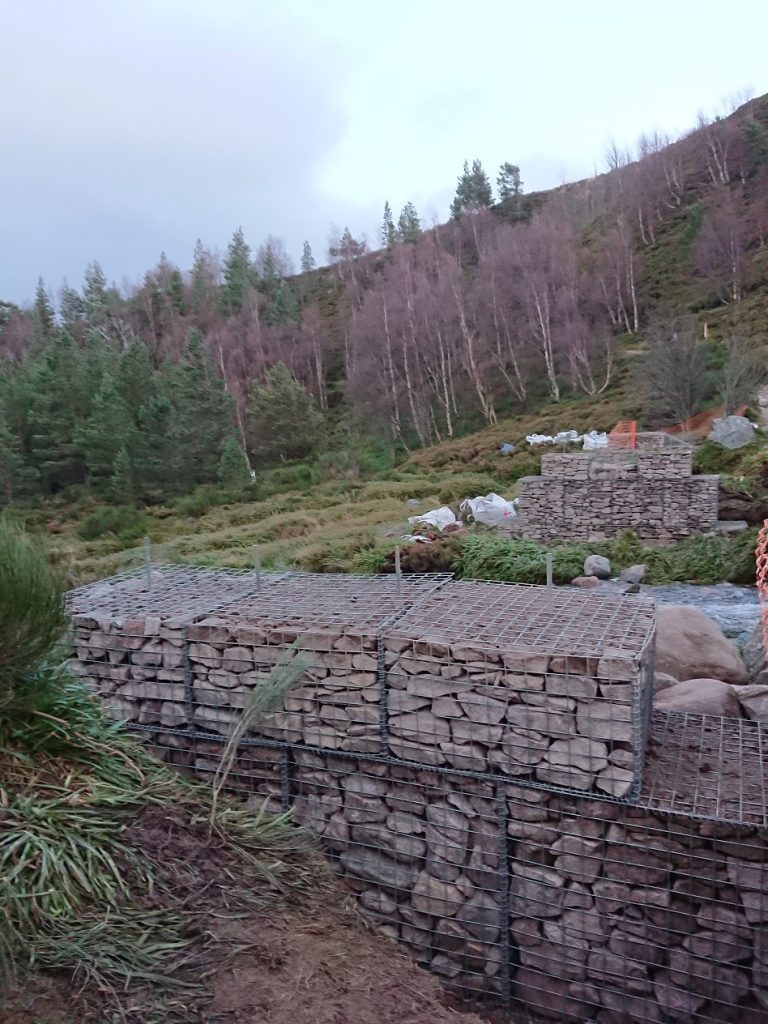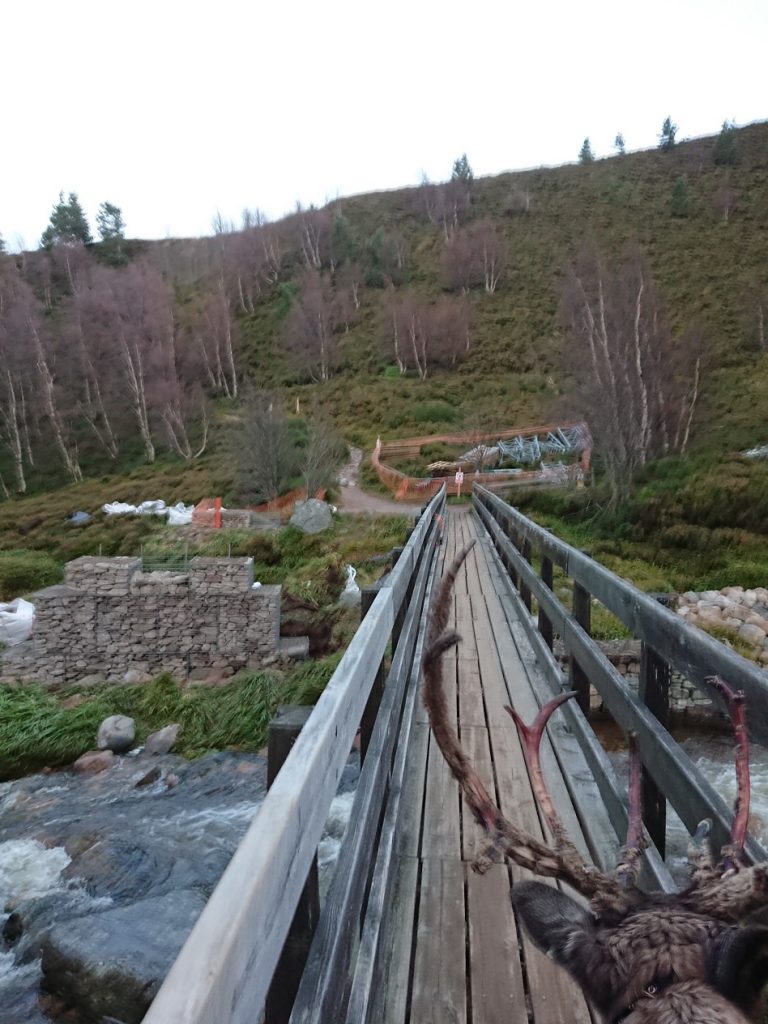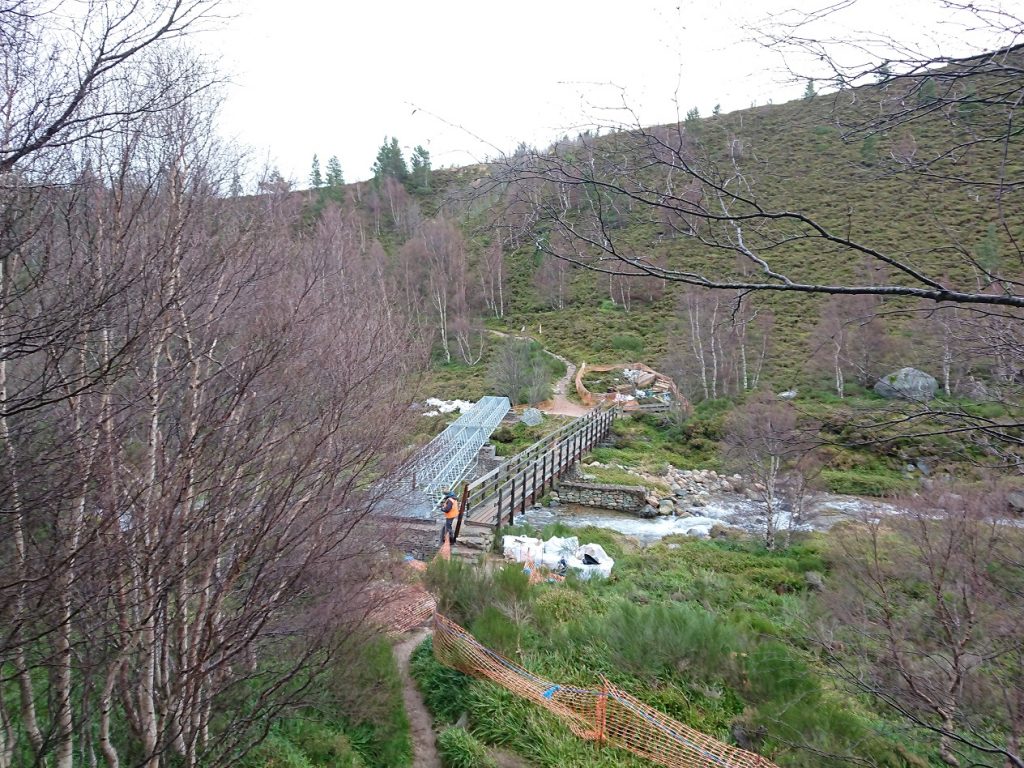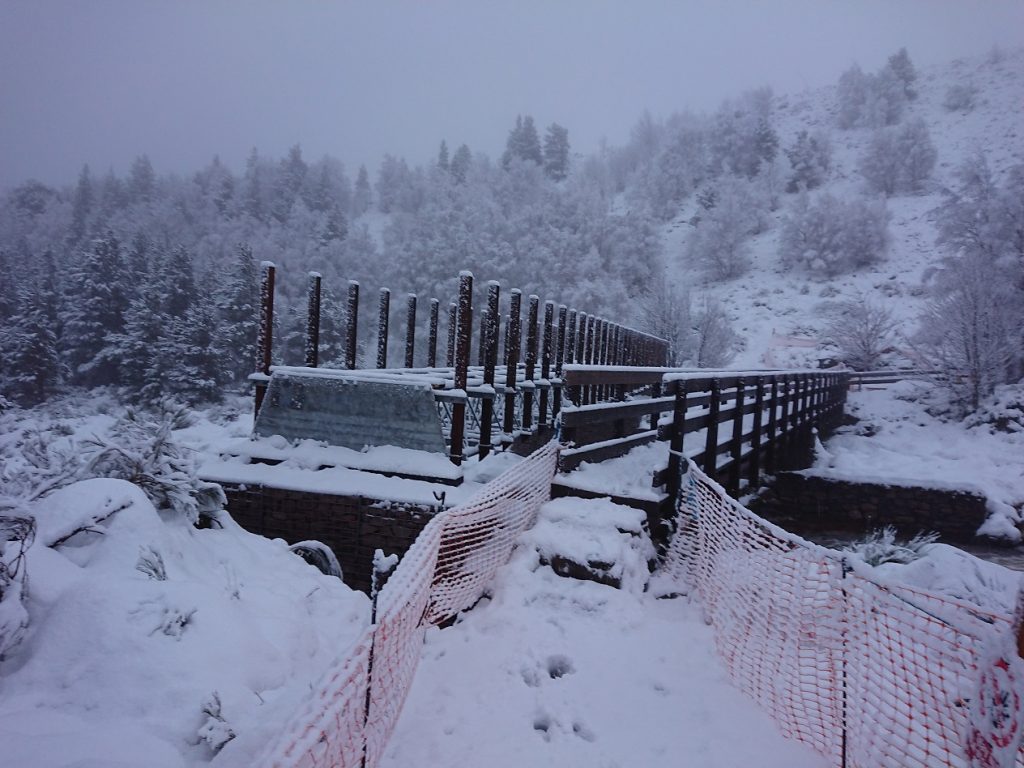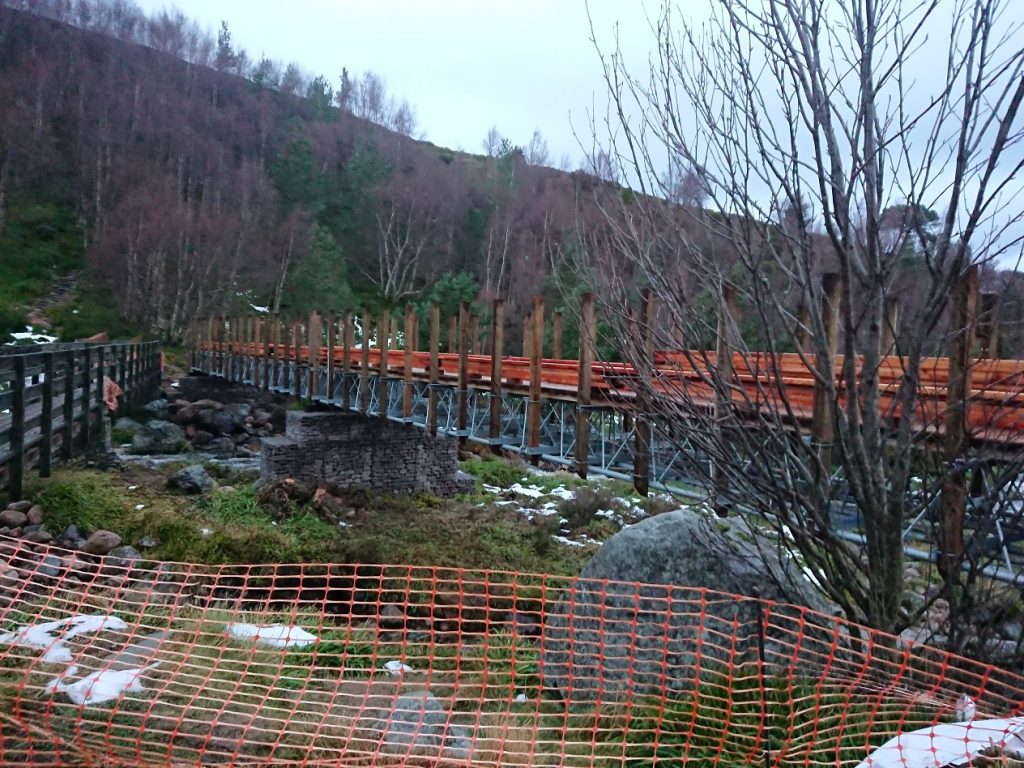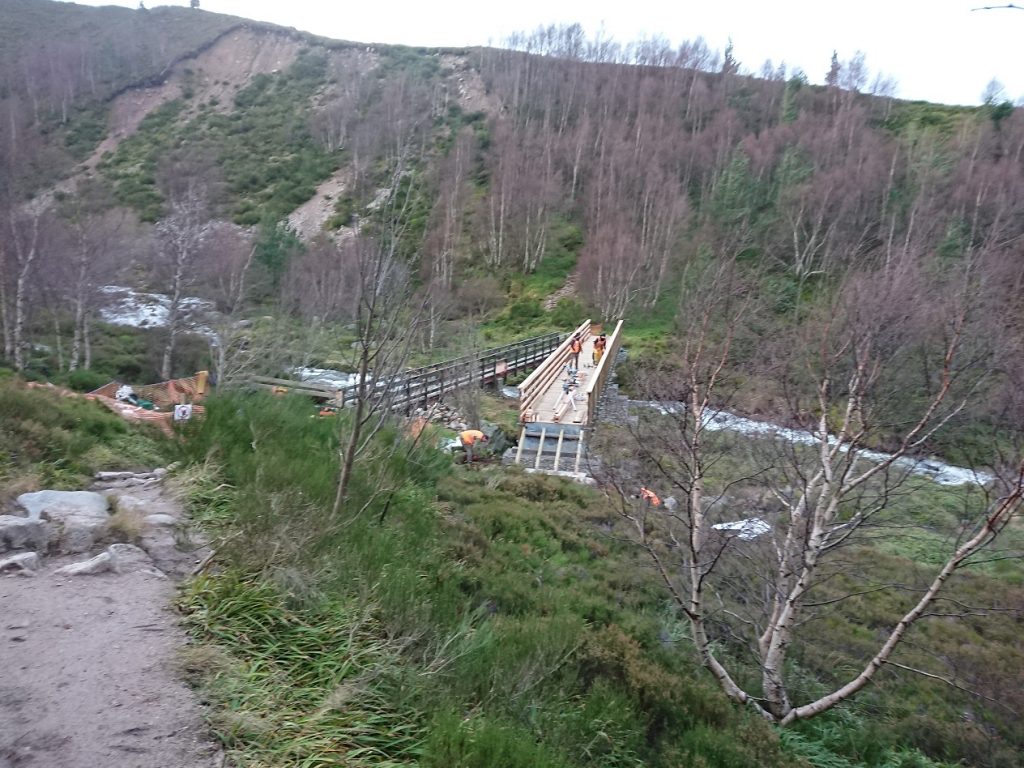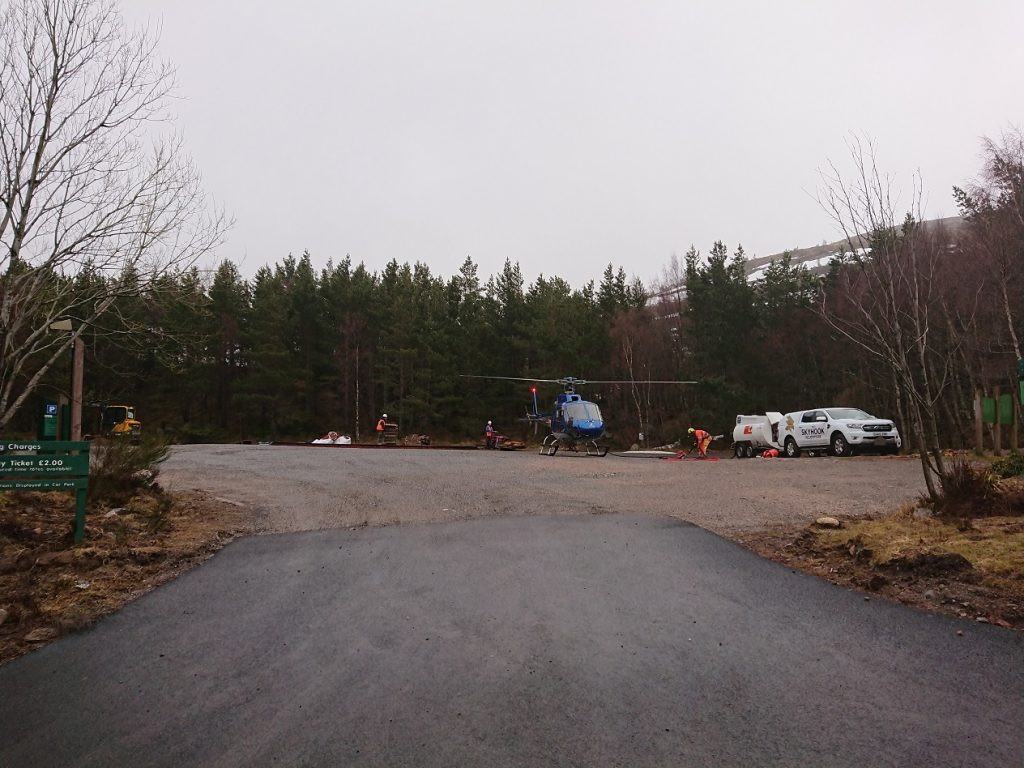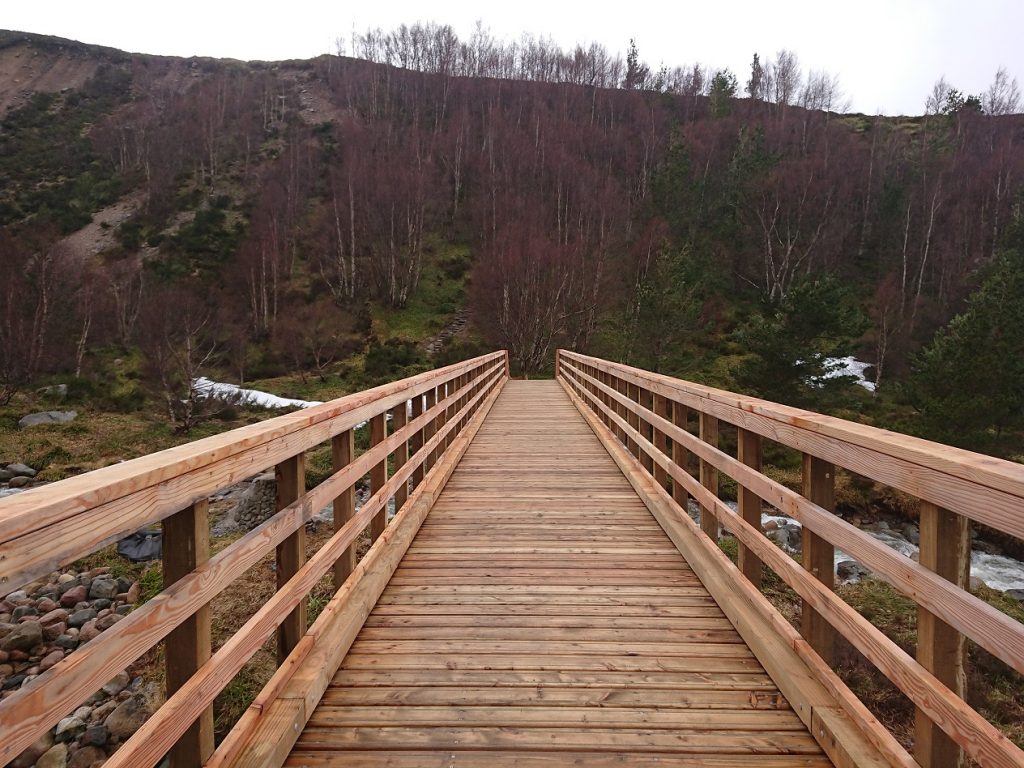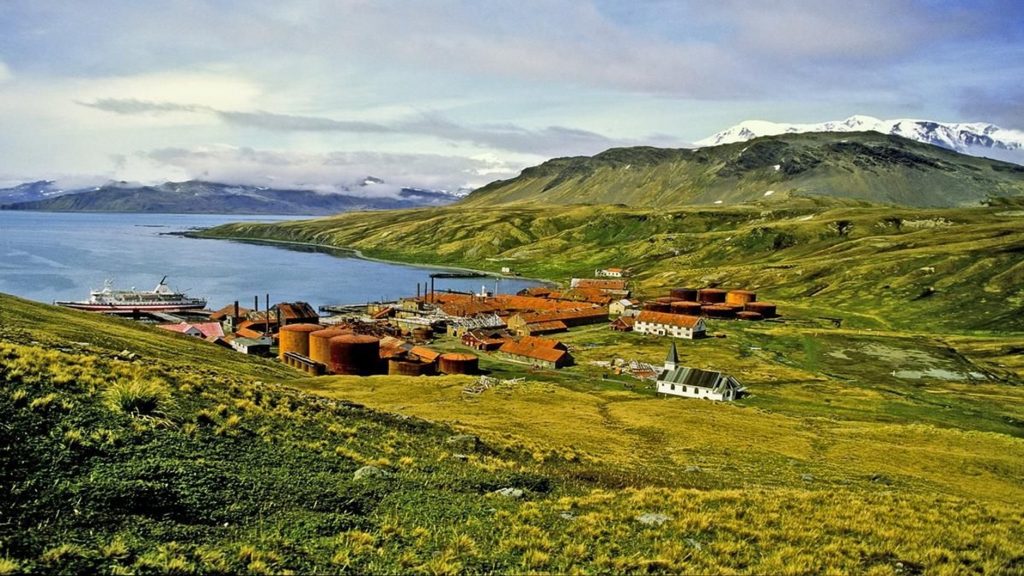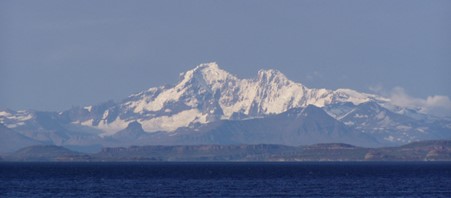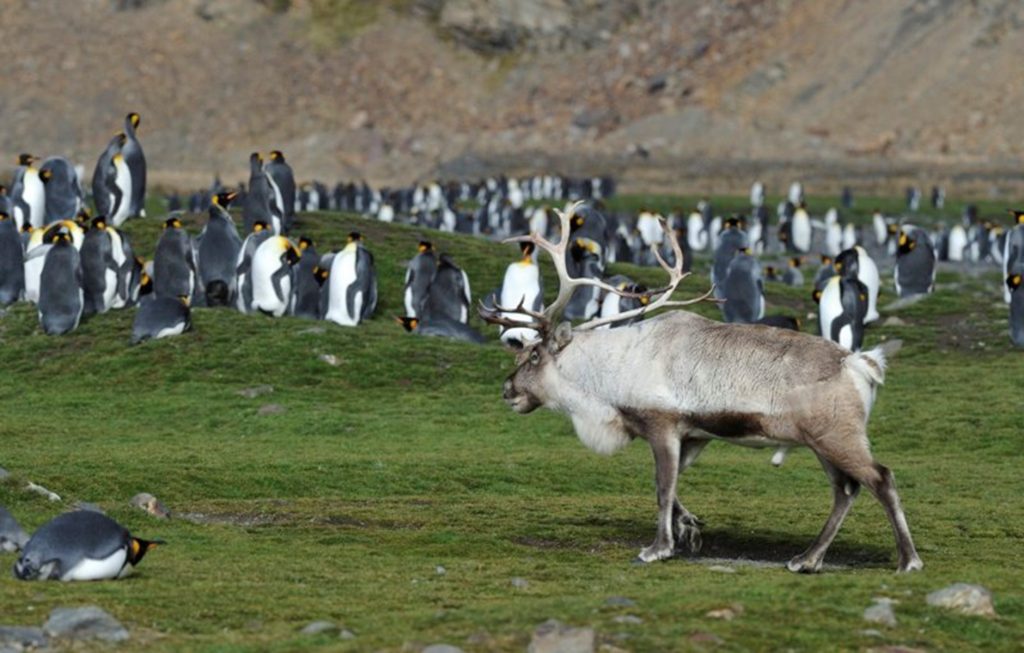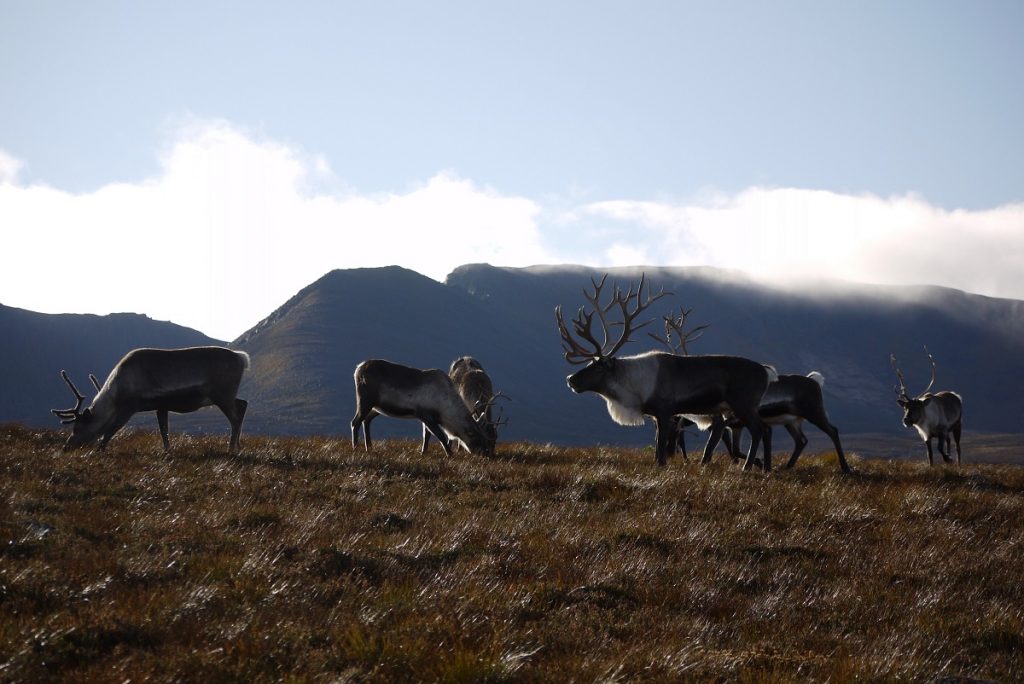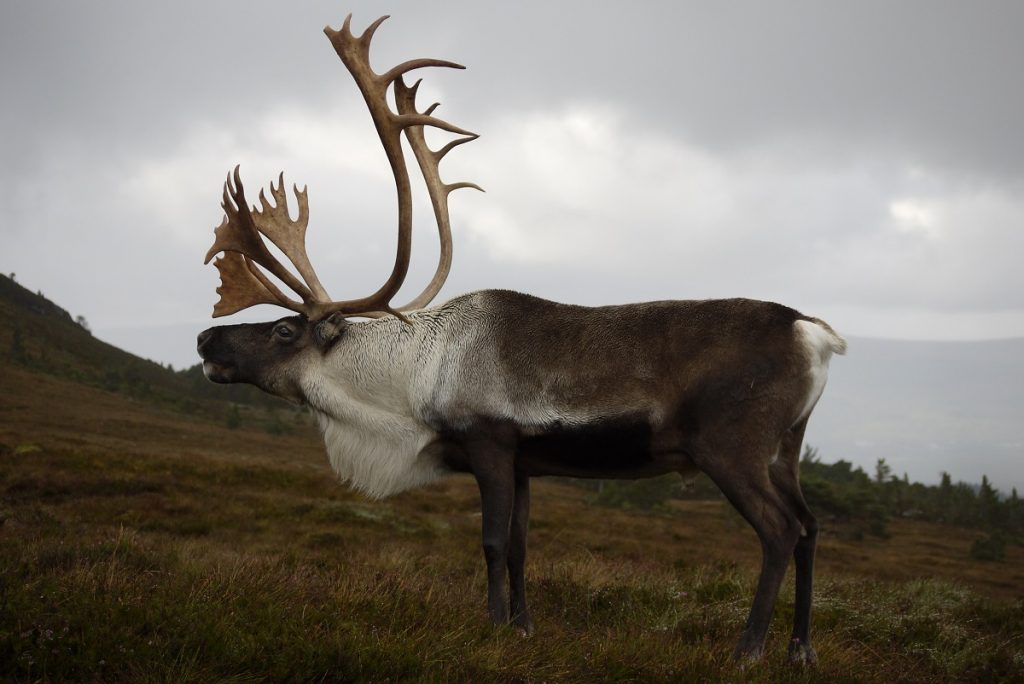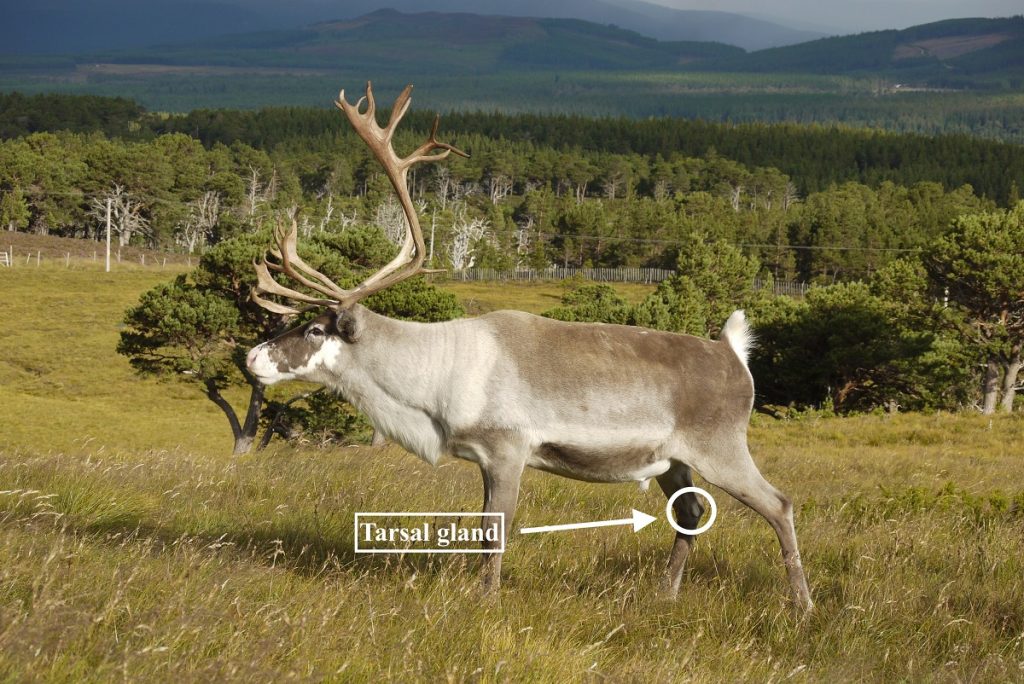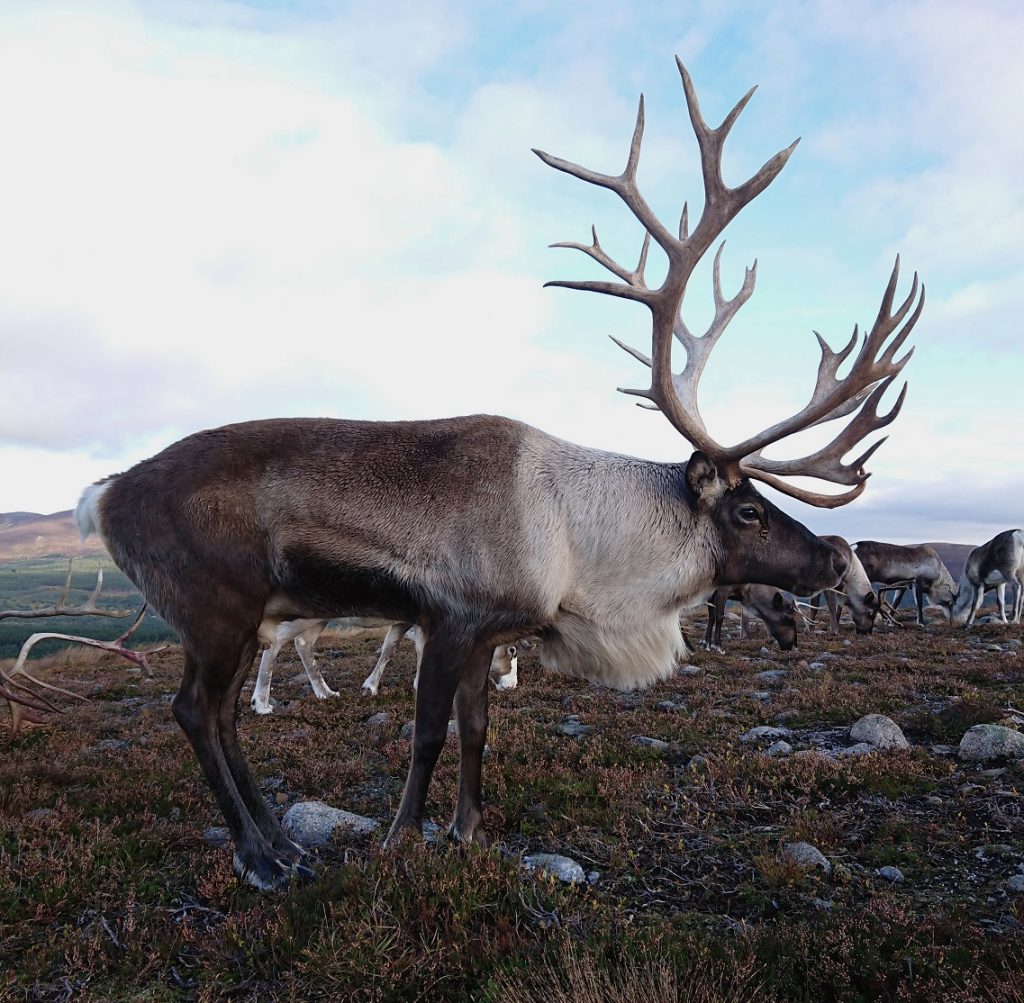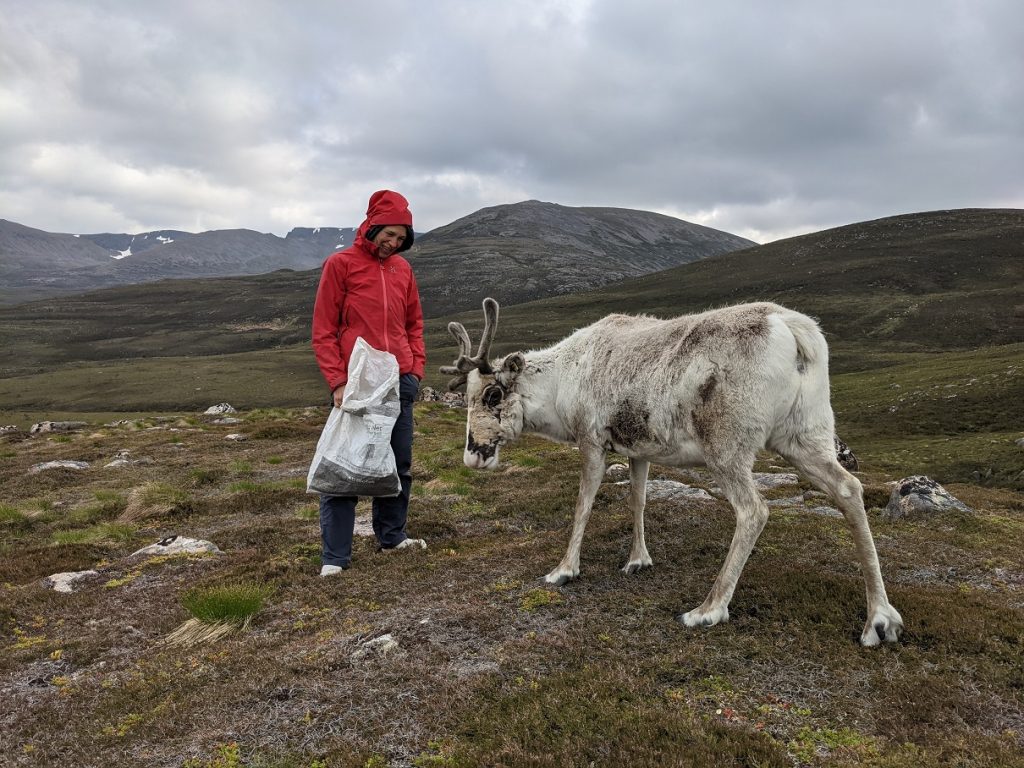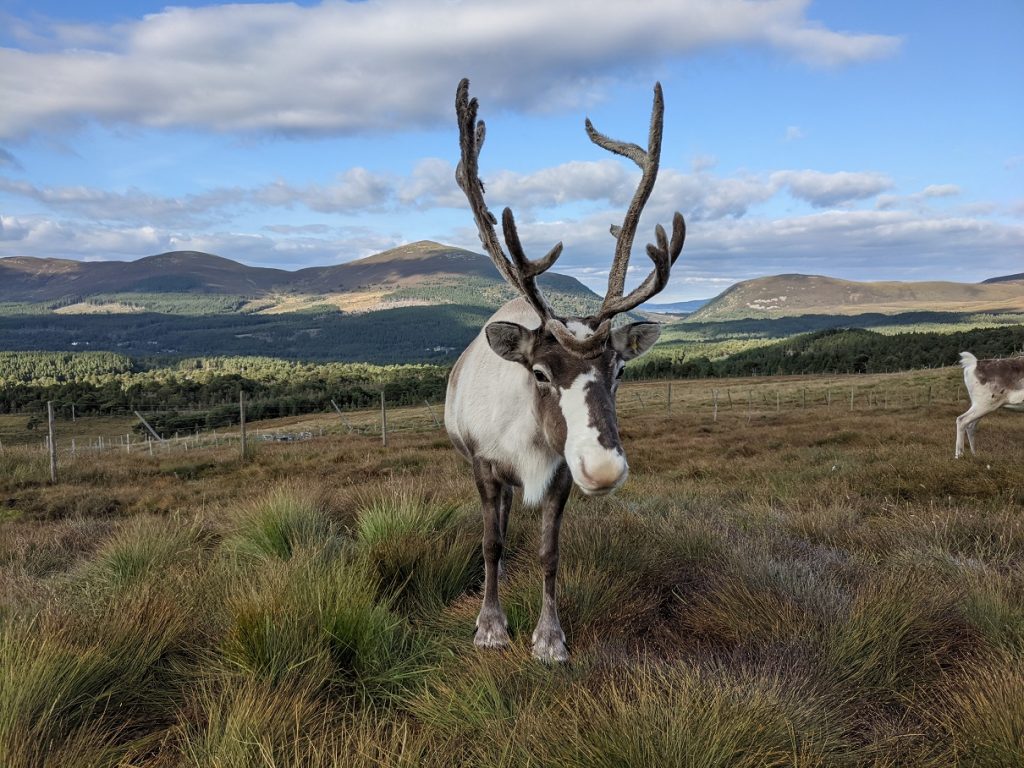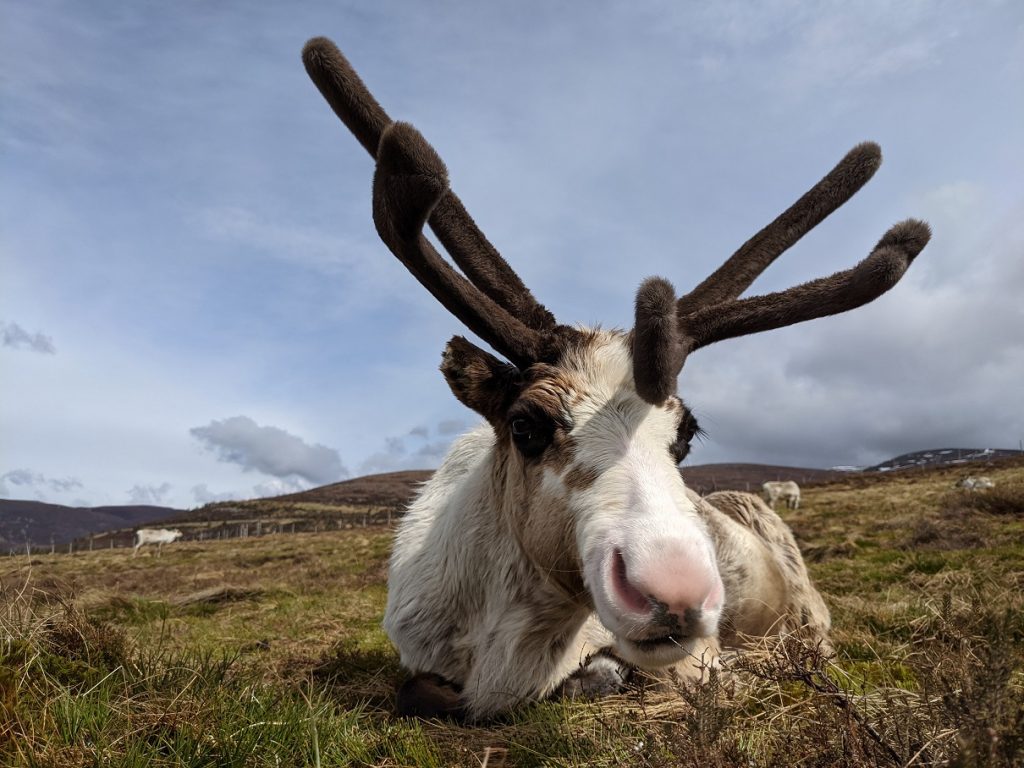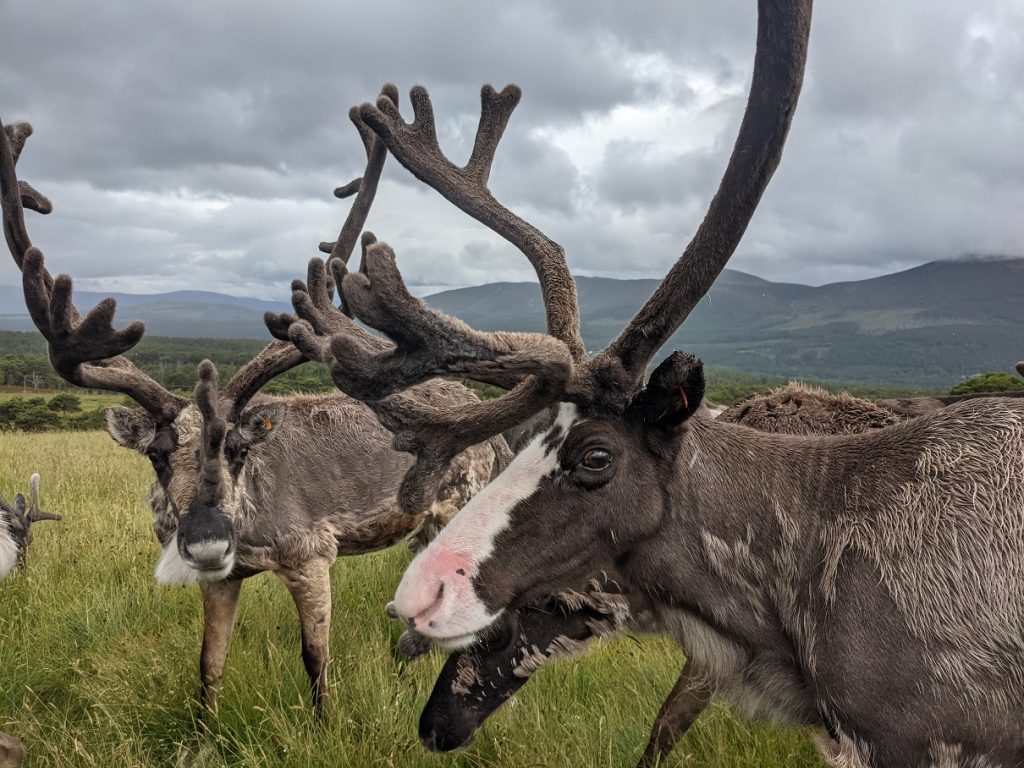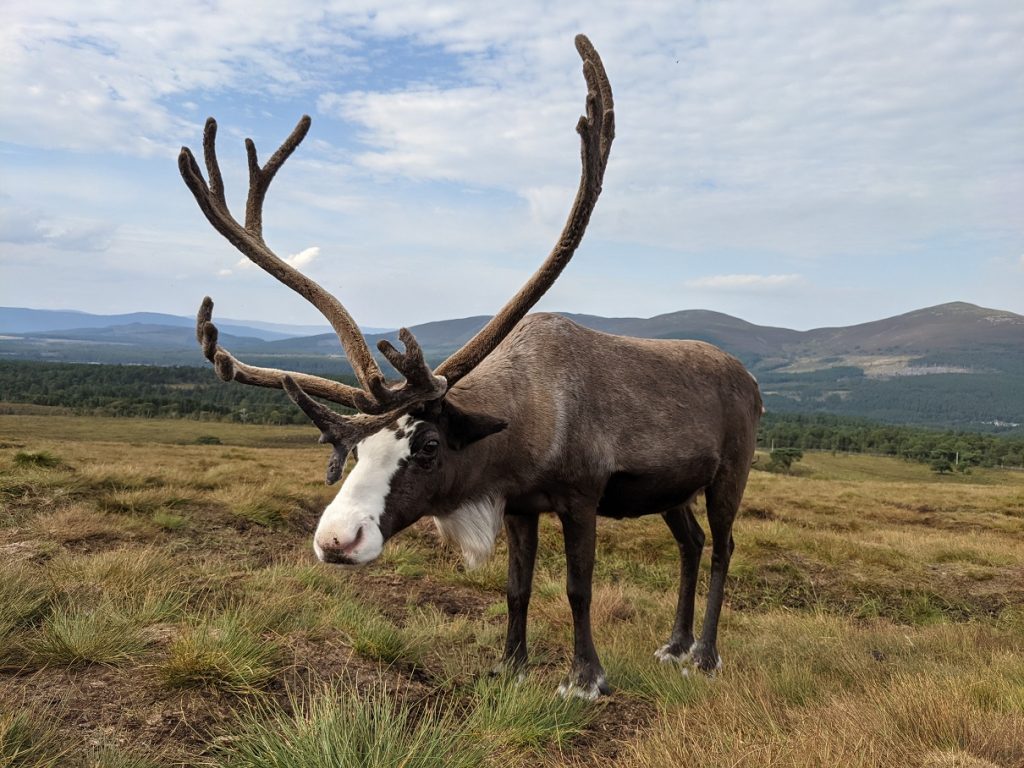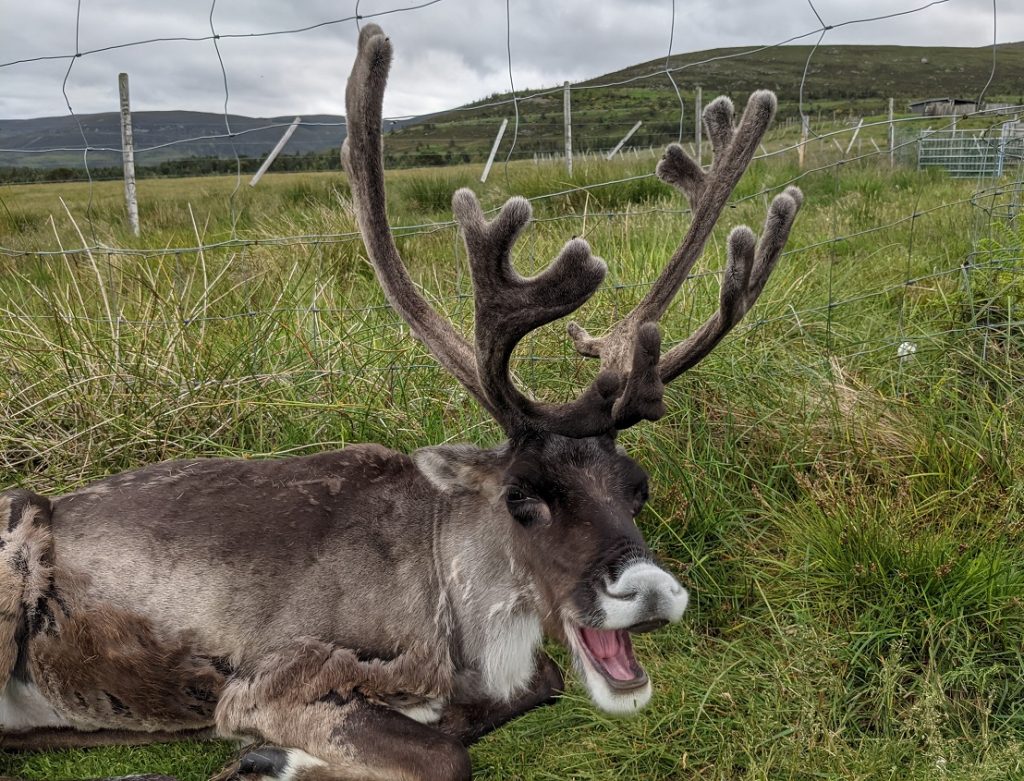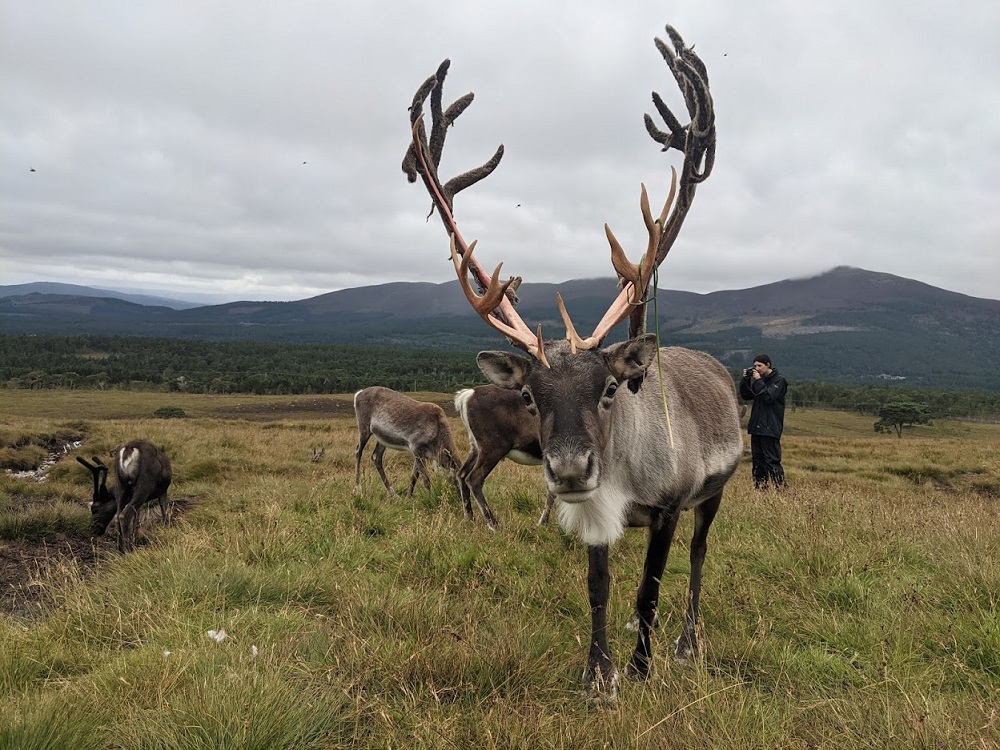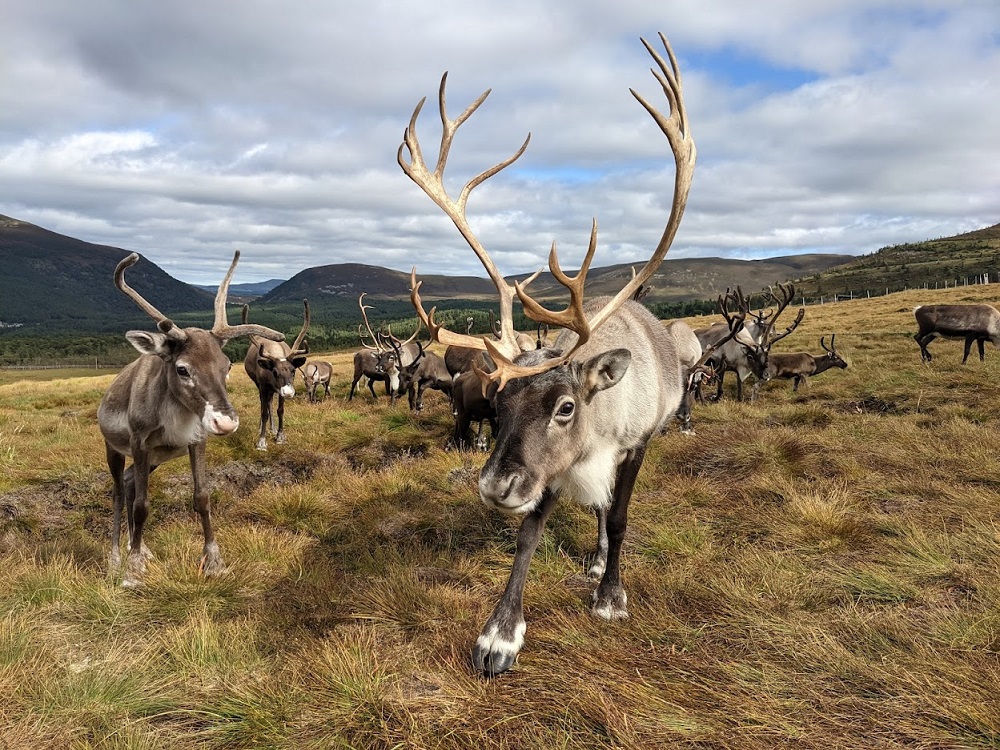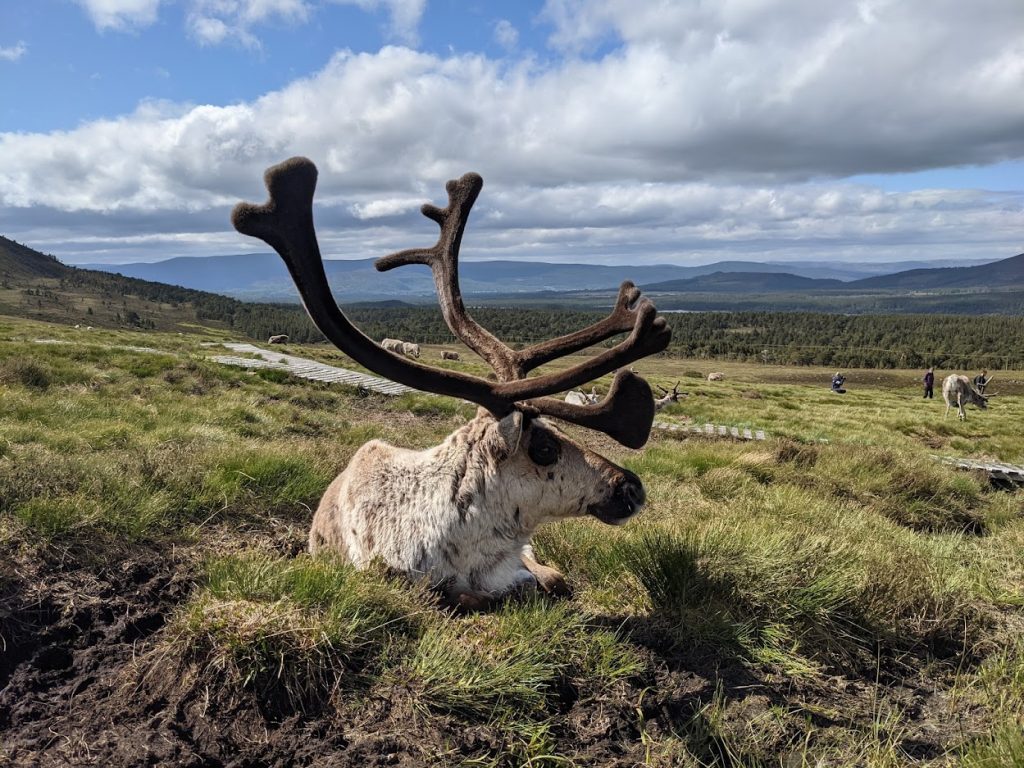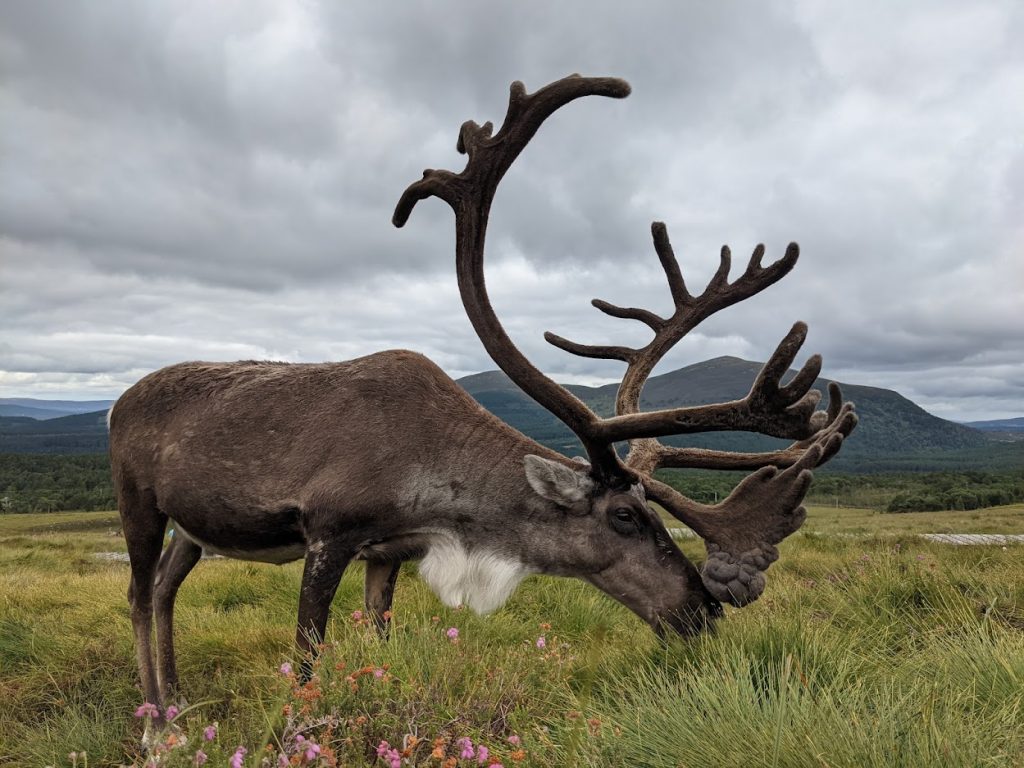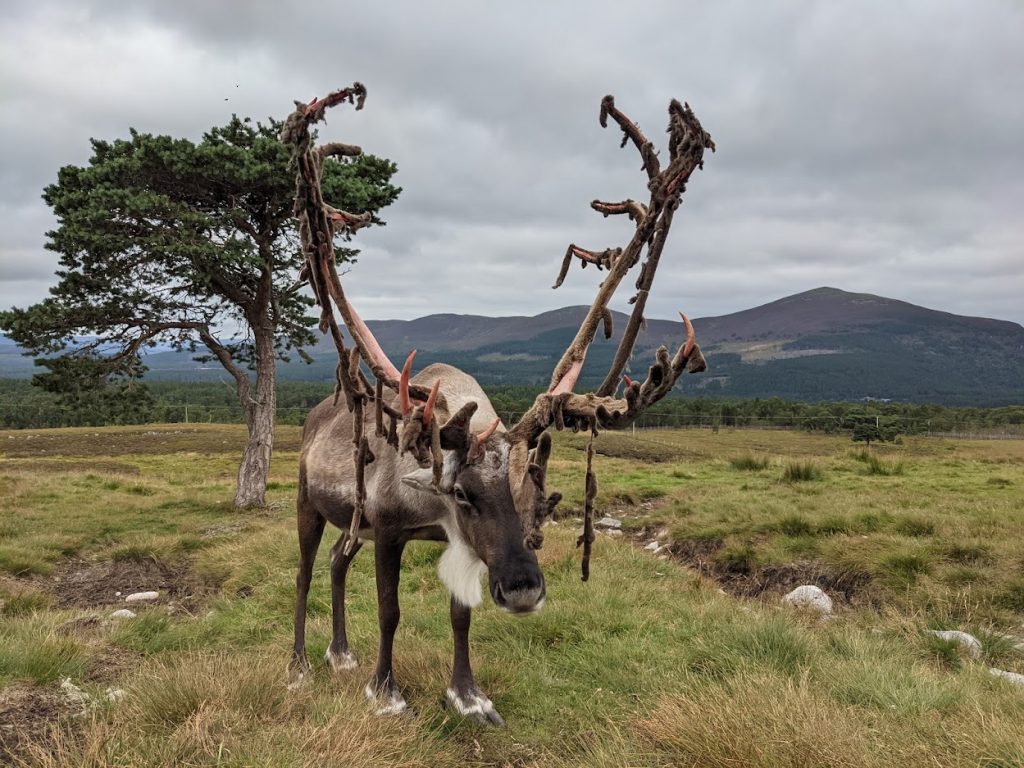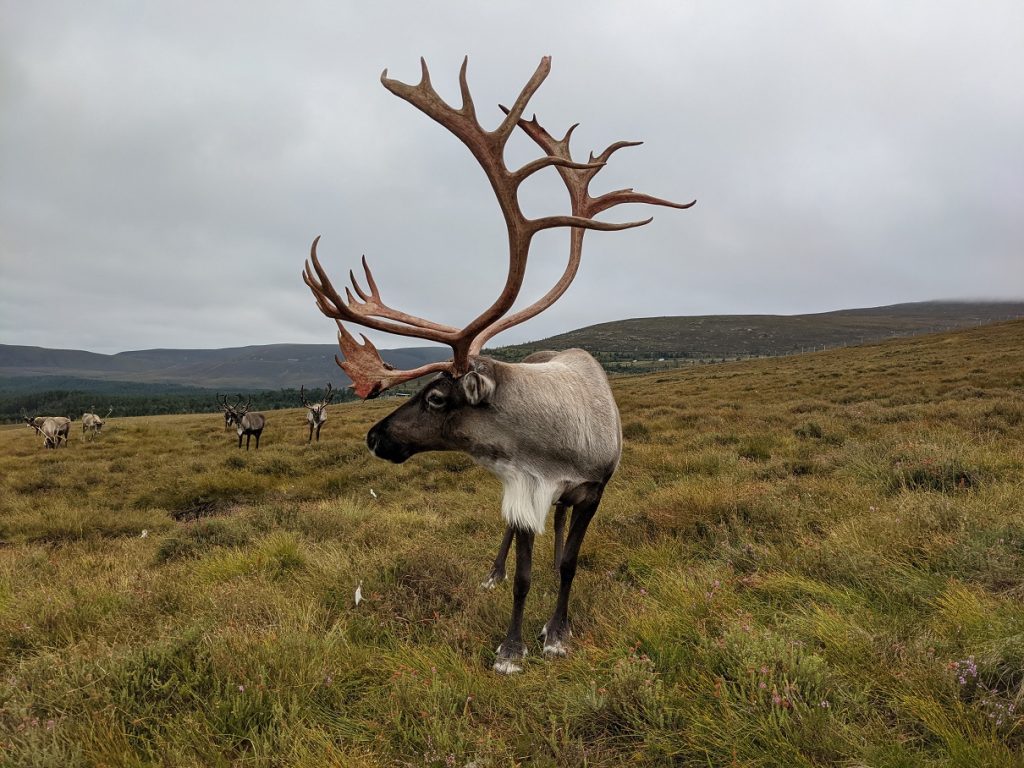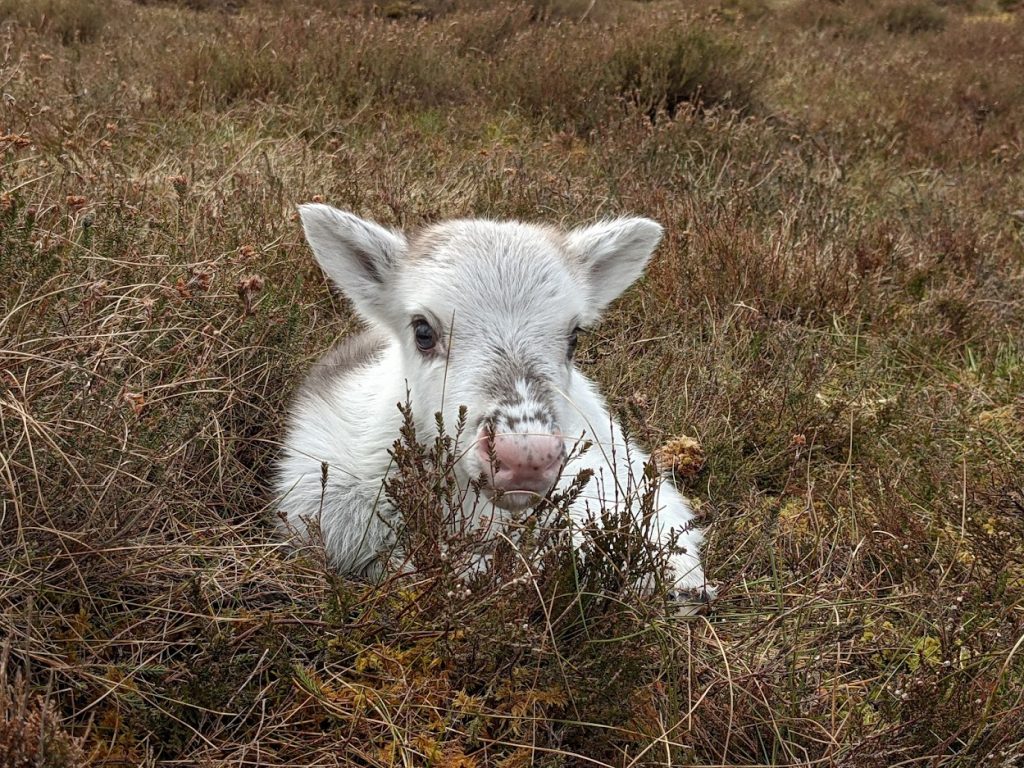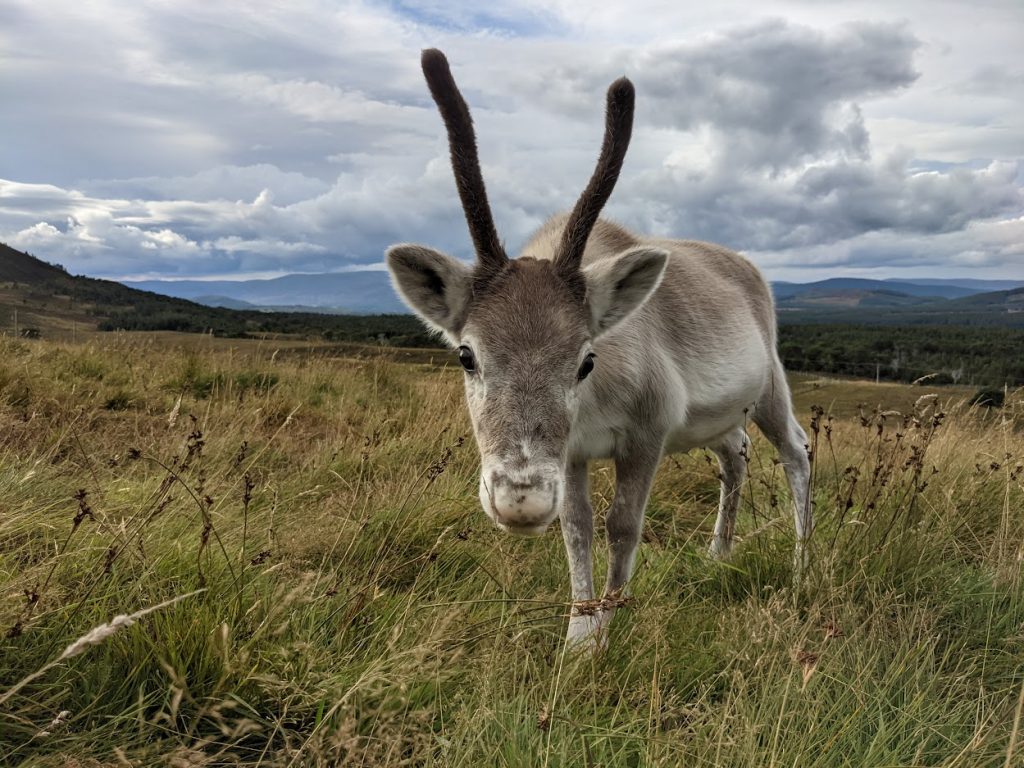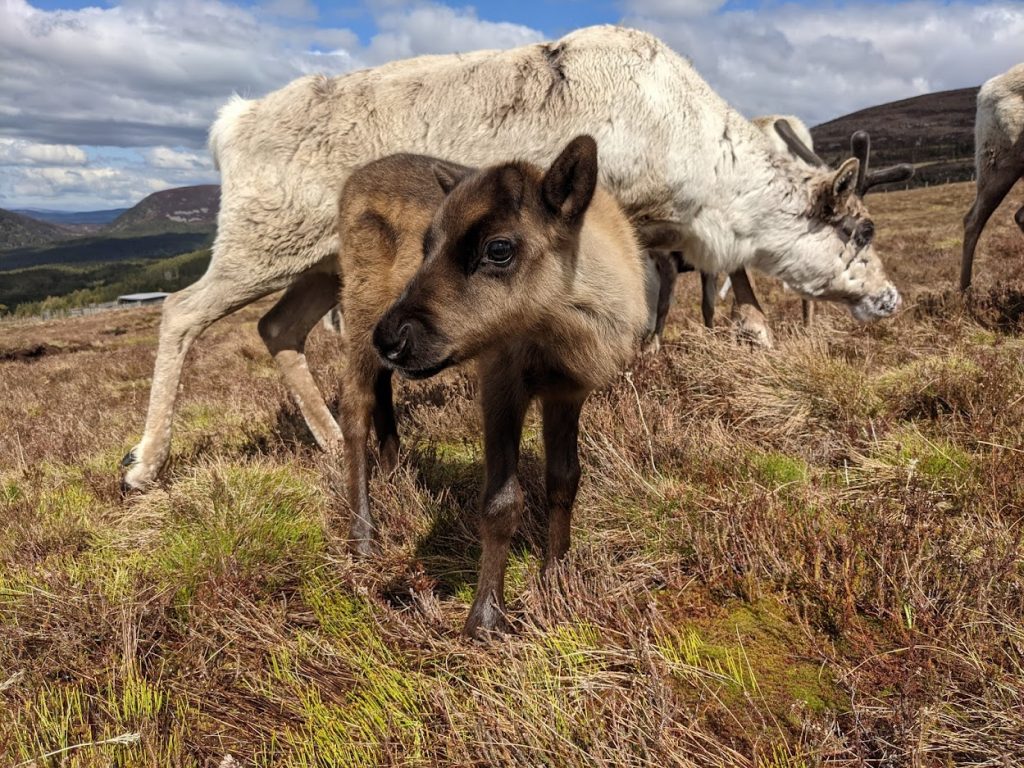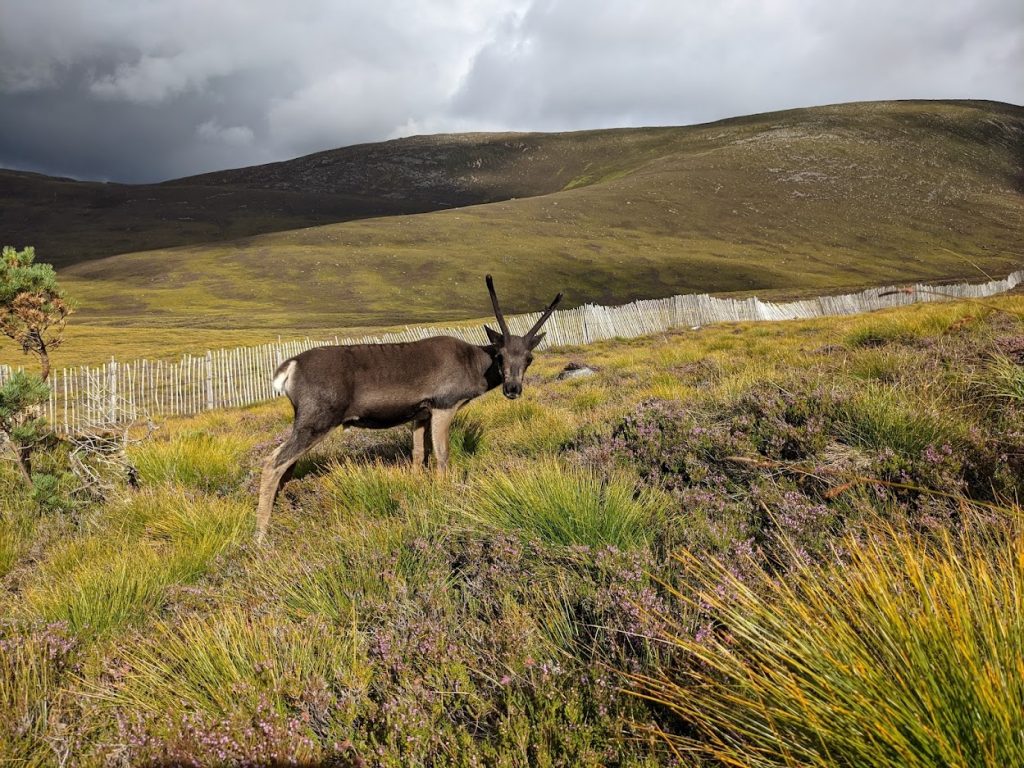Reindeer don’t eat carrots, and other myths to ruin your new year… 😉
Myth 1 – Reindeer are made up
It seems silly when you work with them every day, but it is easy to forget that for a lot of people the only reindeer they know of fly around the world in a single night, so perhaps its not that surprising that they assume they aren’t real.
I’m glad to be able to confirm that reindeer are in fact real and are great fun to work with.

Myth 2 – Reindeer eat carrots
Recent surveys have suggested that British people leave out around 3,000 tonnes of carrots for Rudolph to eat every Christmas Eve. But we aren’t sure where this tradition stems from as they do not grow in sub-Arctic habitats, and reindeer physically can’t eat carrots. Their lack of top teeth prevents them from chewing them down into a digestible size.
The food of choice for most reindeer is lichen, a fungi-algi symbiote, that grows here in the Cairngorm mountains and keeps the herd healthy. We also use it to help entice our reindeer during handling, or sometimes just give it out as a treat!

Myth 3 – Reindeer can fly
This one really goes hand in hand with Myth 1, but I am still yet to see one fly.
I do hear things are different on Christmas Eve though…?
Myth 4 – Antler points correlate with age
Antlers do tend to increase in size (and therefore often the number of points) with age, however this doesn’t necessarily align with exact ages in years. Also, over the course of their lives, the antlers are susceptible to change. For example, a cow’s antlers tend to be smaller any year she has a calf, a more senior reindeer tends to grow a smaller set, and damage or breaks in antlers can change the growth pattern permanently.
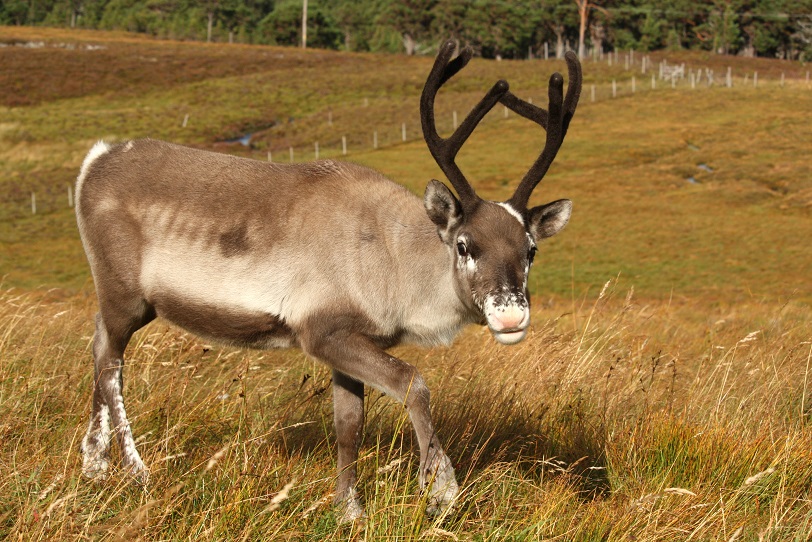
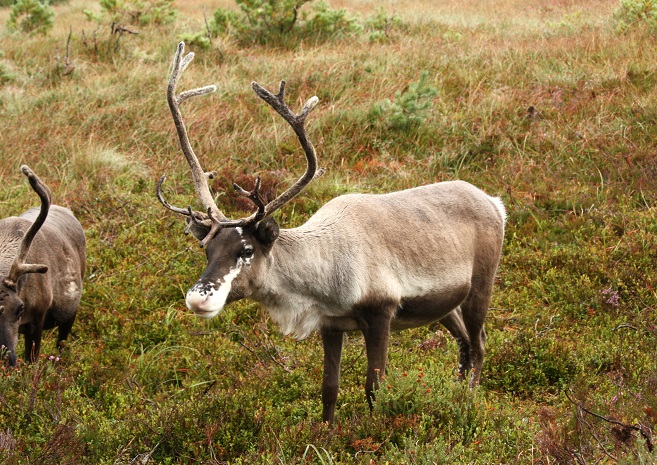
Myth 5 – Who pulls the sleigh at Christmas
This is an interesting one because the fact that some reindeer keep their antlers through winter leads to confusion about who might be pulling the sleigh. Many people’s first assumption is that it is all boys, due to the antlers. However, the fact that bulls will drop their heavier antlers before winter sets in has led many people to believe that sleigh teams are led by female reindeer (who tend to keep their antlers until the end of winter). While we may take female yearlings and calves out with the sleigh, the reindeer we have pulling the sleigh are castrated males. This is due to their laid-back nature, but also, they tend to hold their antlers longer than entire bulls. Additionally, mature female reindeer could be pregnant at Christmas time.
Castrates have long played an important role in reindeer herding culture. They tend to be more docile and better for training than bulls or cows, and in herds of thousands of reindeer a well-trained castrate male can be used as a ‘decoy’ to influence the movement of the herd in a desired direction.
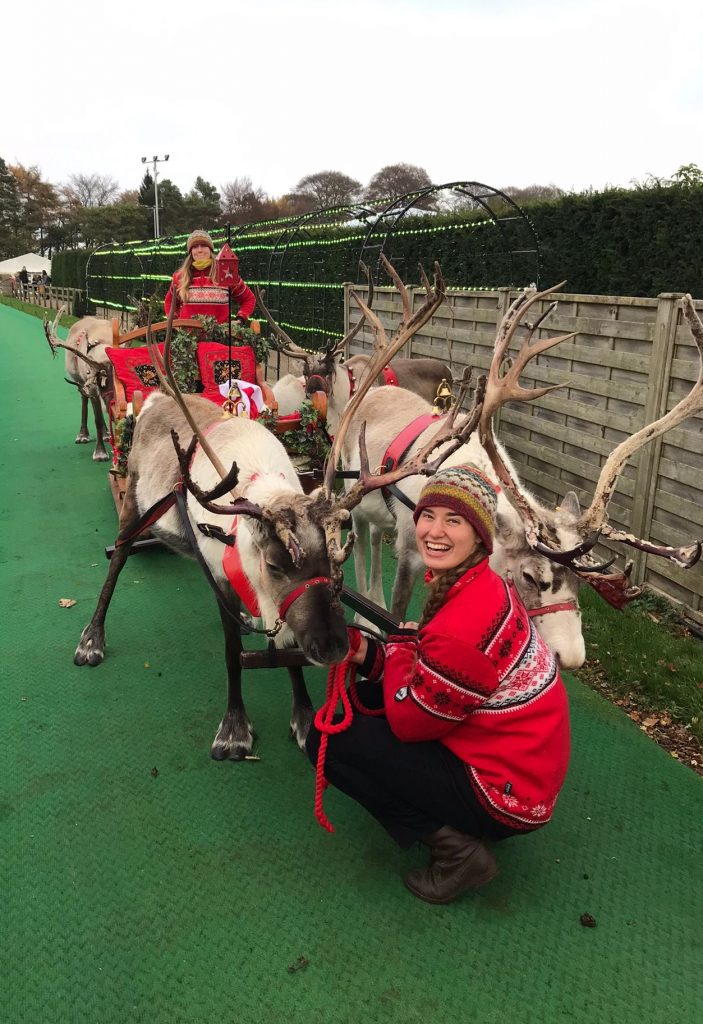
Myth 6 – Antlers are made of wood
While the various textures and colours of antlers throughout their life cycle can often make them look wooden, fully grown antlers are formed of bone. They grow throughout the summer months, while covered in a thin layer of skin and a fur called velvet, and then in autumn the skin will be shed, and the bone shows through. At this point there is no more feeling in the antler, as the blood supply has fully stopped – which is the reason the skin sheds. The reindeer often look quite dramatic at this point, as residual blood can make for a scary looking reindeer! But after a rainy day or two the antlers will look lovely and clean.
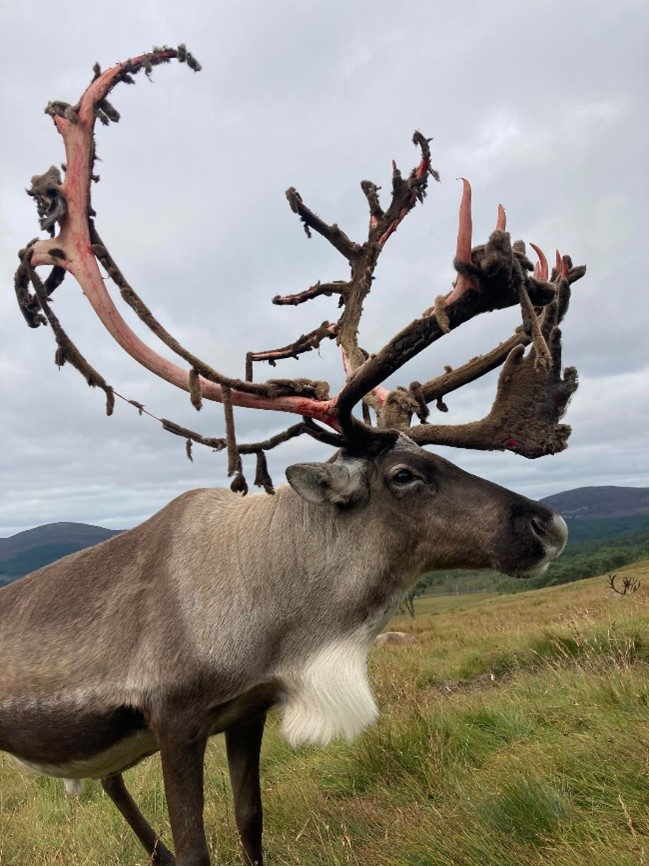
Harry

